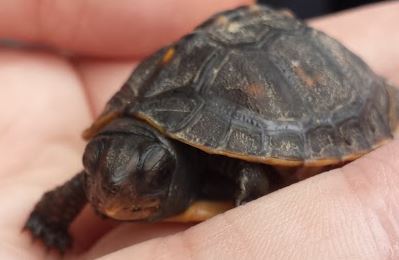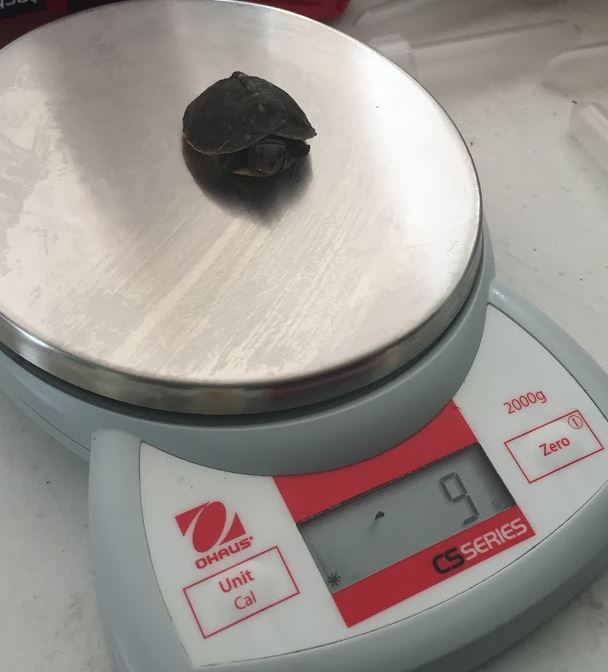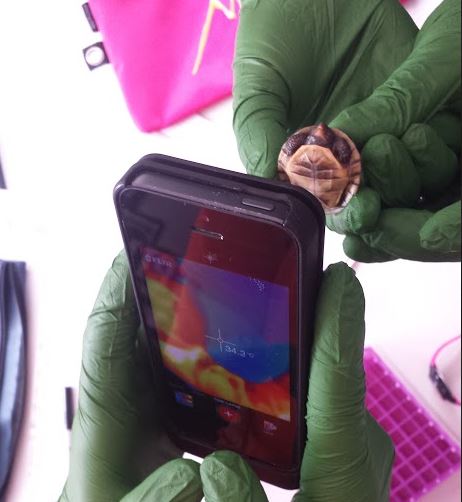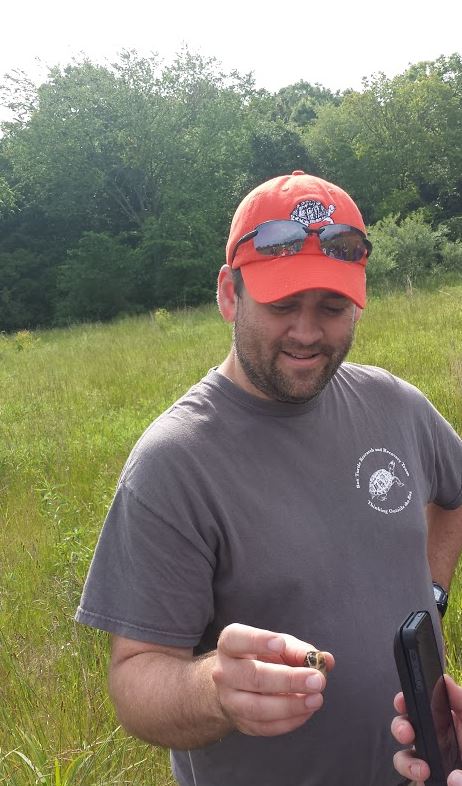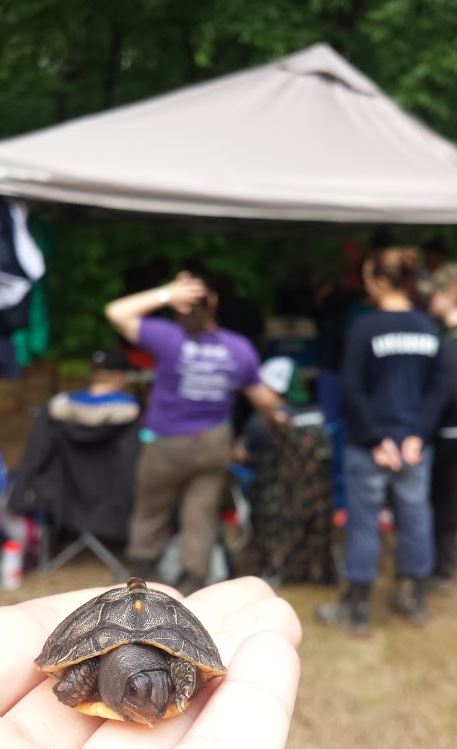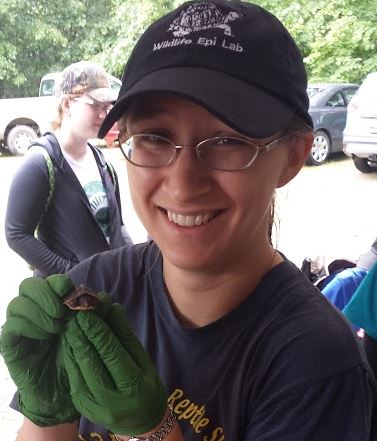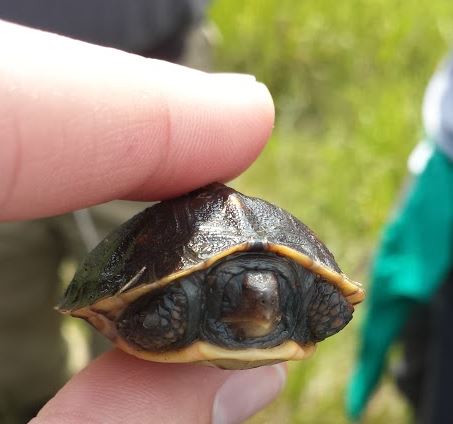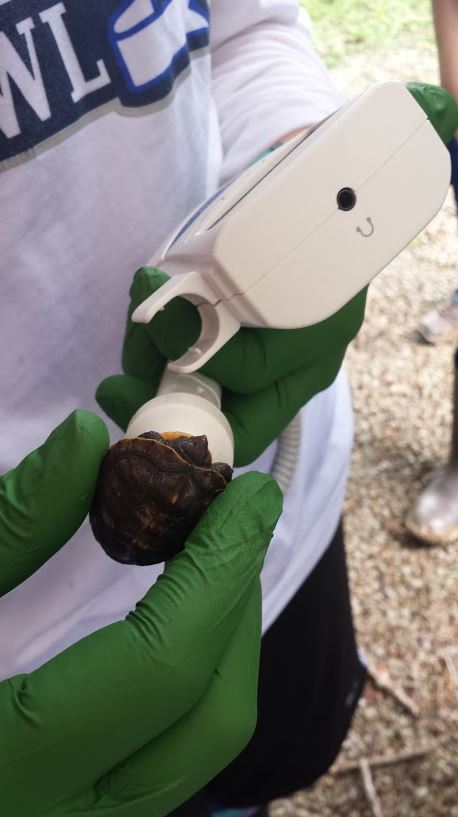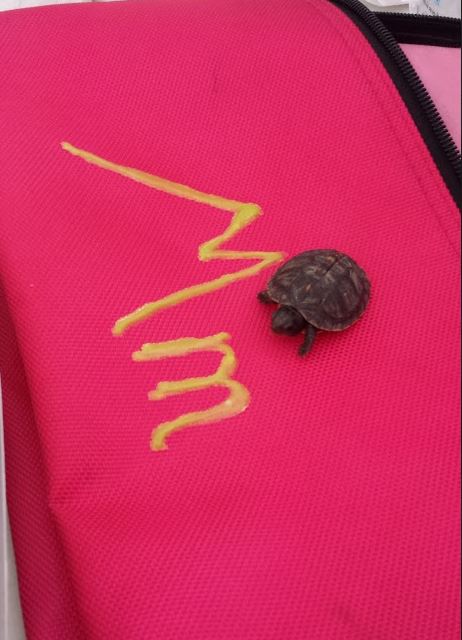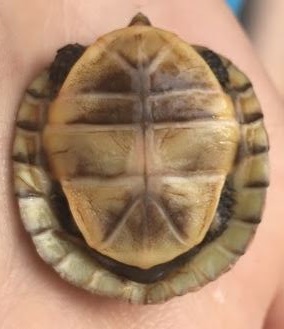This was our second time, ever, searching at Stephen A. Forbes State Recreation Area in southern Illinois.
This search site was so far away from the Wildlife Epidemiology Lab that we had to stay overnight near the site. This means that we got to camp after searching for Eastern Box Turtles and after labwork was completed.
All-in-all we captured and sampled 82 turtles in three days. We also collected 3 turtle shells. It was five and a half hours of searching in total. The second day of searching was a record breaking day! Forty-three live Eastern Box Turtles in one day is a record for Turtle Team in Illinois!! It was completed in two hours. This was pretty exciting. We also caught the smallest Eastern Box Turtle that Turtle Team has ever seen on day three [a photoshoot of the tiny turtle is at the end of the blog].
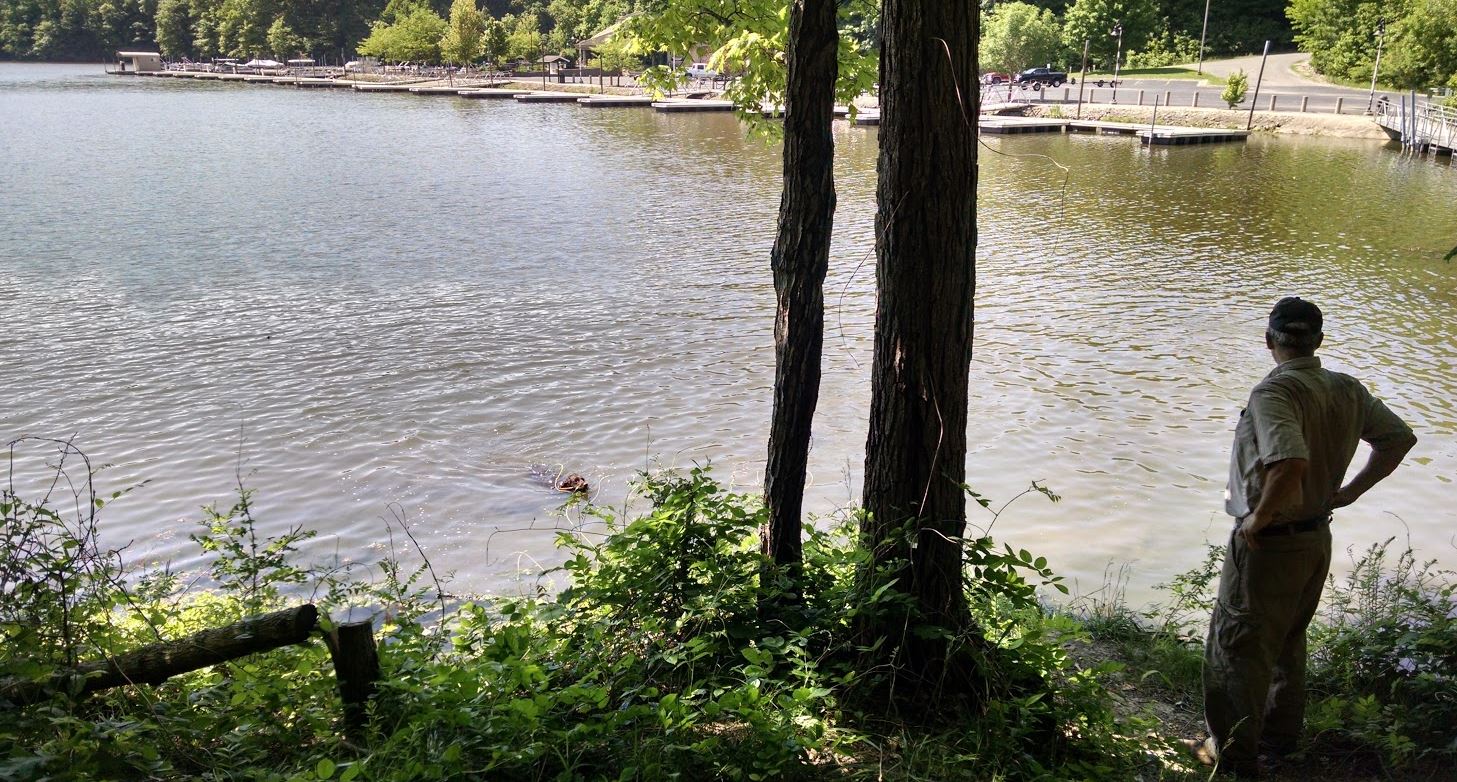
John Rucker, trainer and owner of our search dogs, takes a break from the sun with his swimming pup.
The eastern box turtle…
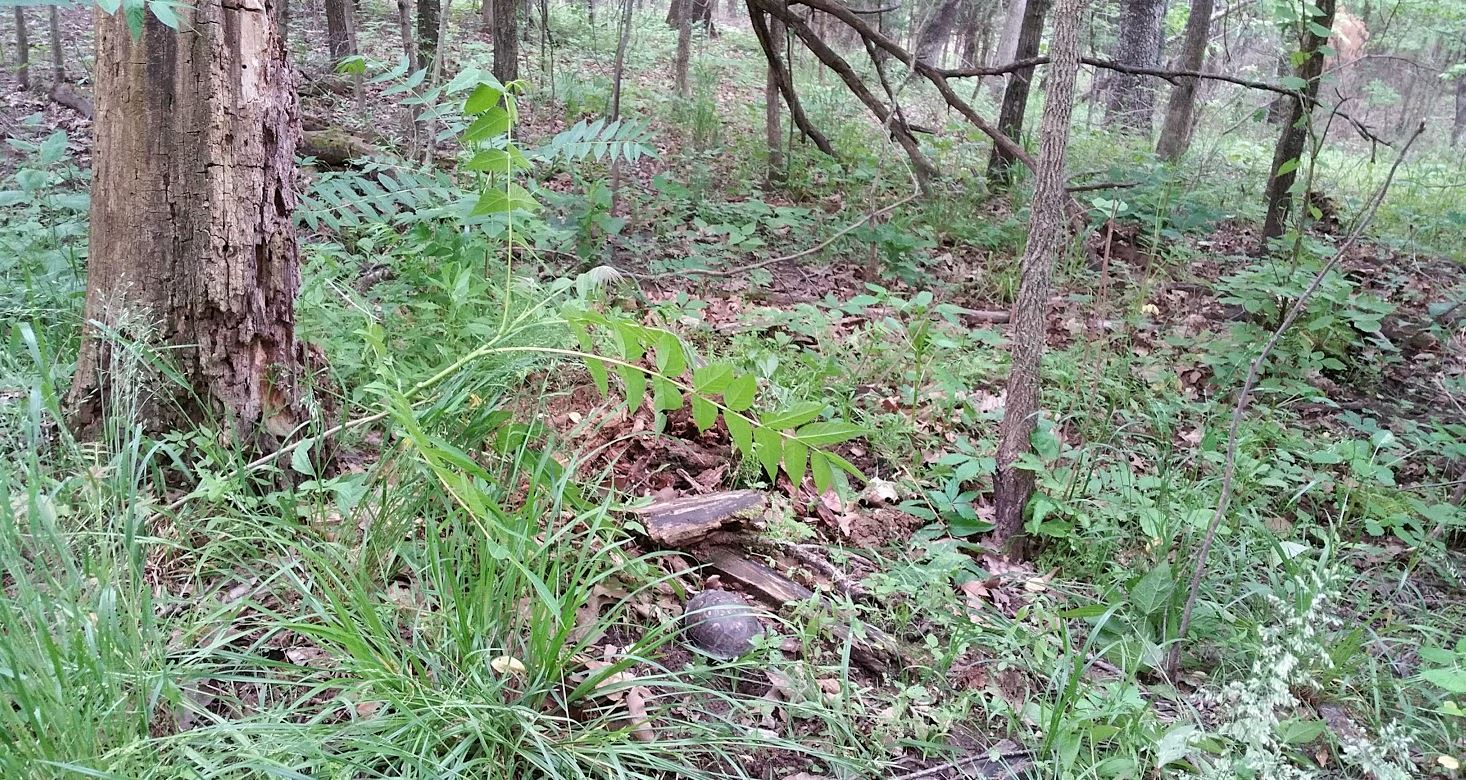
The Eastern Box Turtles can be hard to spot sometimes! Can you find the one in this picture?
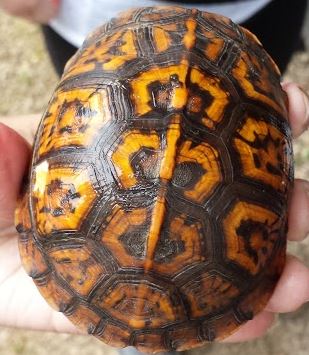
One of the awesome features of this species of turtle is the color variation in their shells!
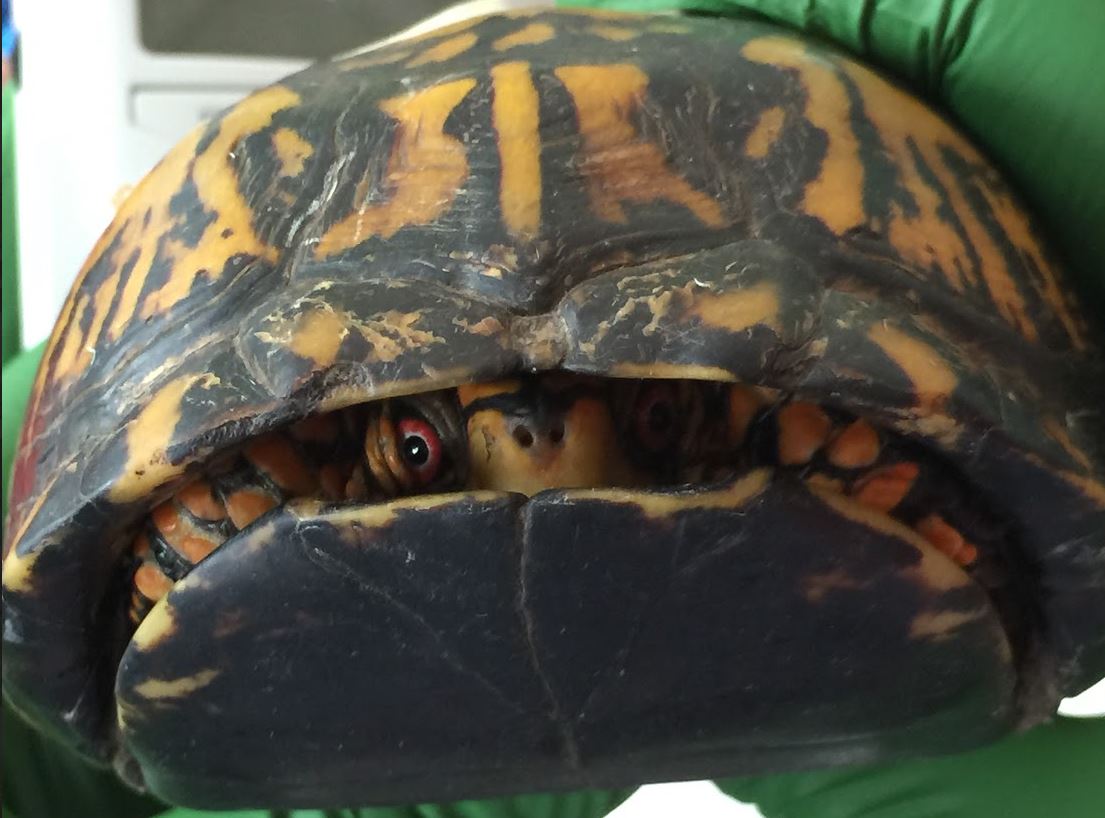
Another distinguishing feature of the Eastern Box Turtle is that is has a hinge on the bottom of its shell (plastron) that allows the shell to shut completely!
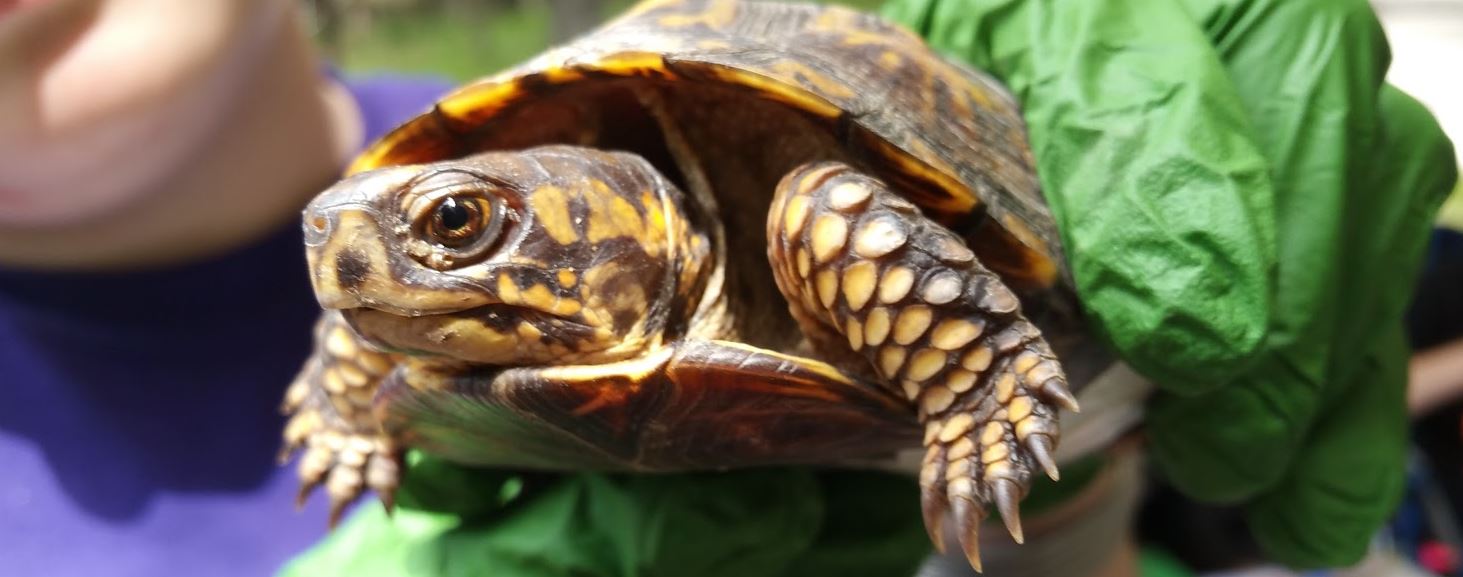
Eastern Box Turtle
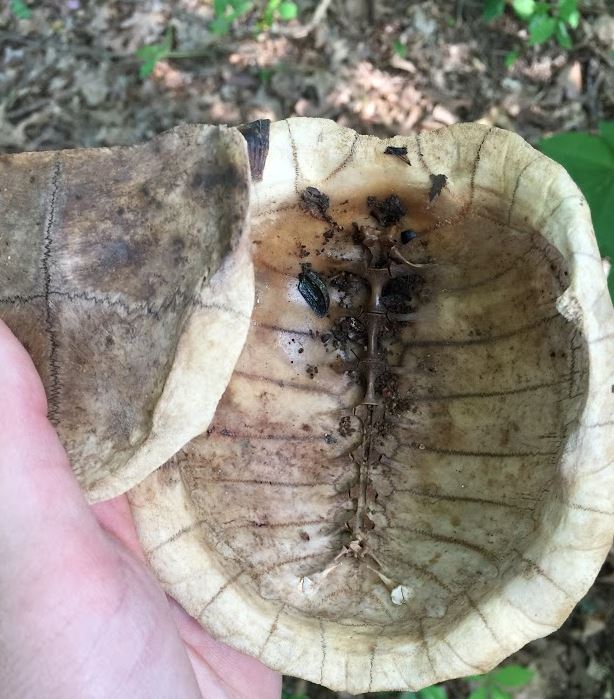
Sometimes we find shells of dead turtles. We collect and freeze them because Claire helped create a method to detect pathogens in the bone marrow!
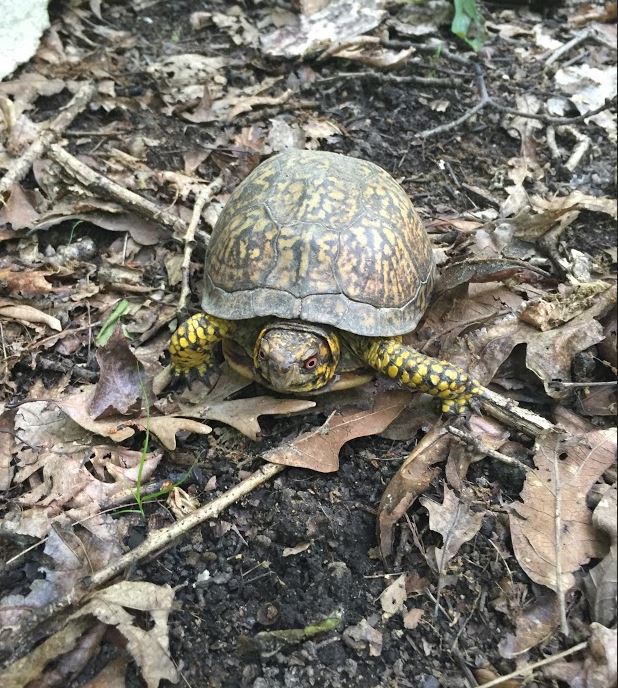
Eastern Box Turtles have a dome-shaped carapace (top portion of shell), unlike other species of turtle.
How do we capture the turtles…?
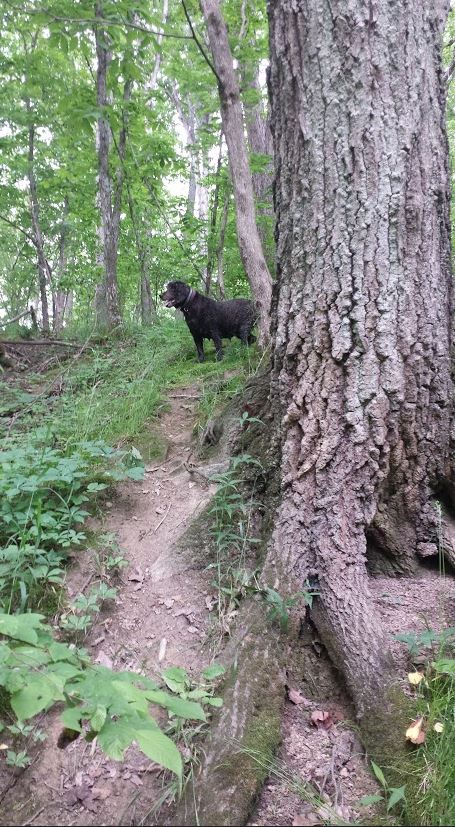
We used trained Boykin spaniels to capture the turtles! They follow the turtles’ scent trails after the turtles have moved.
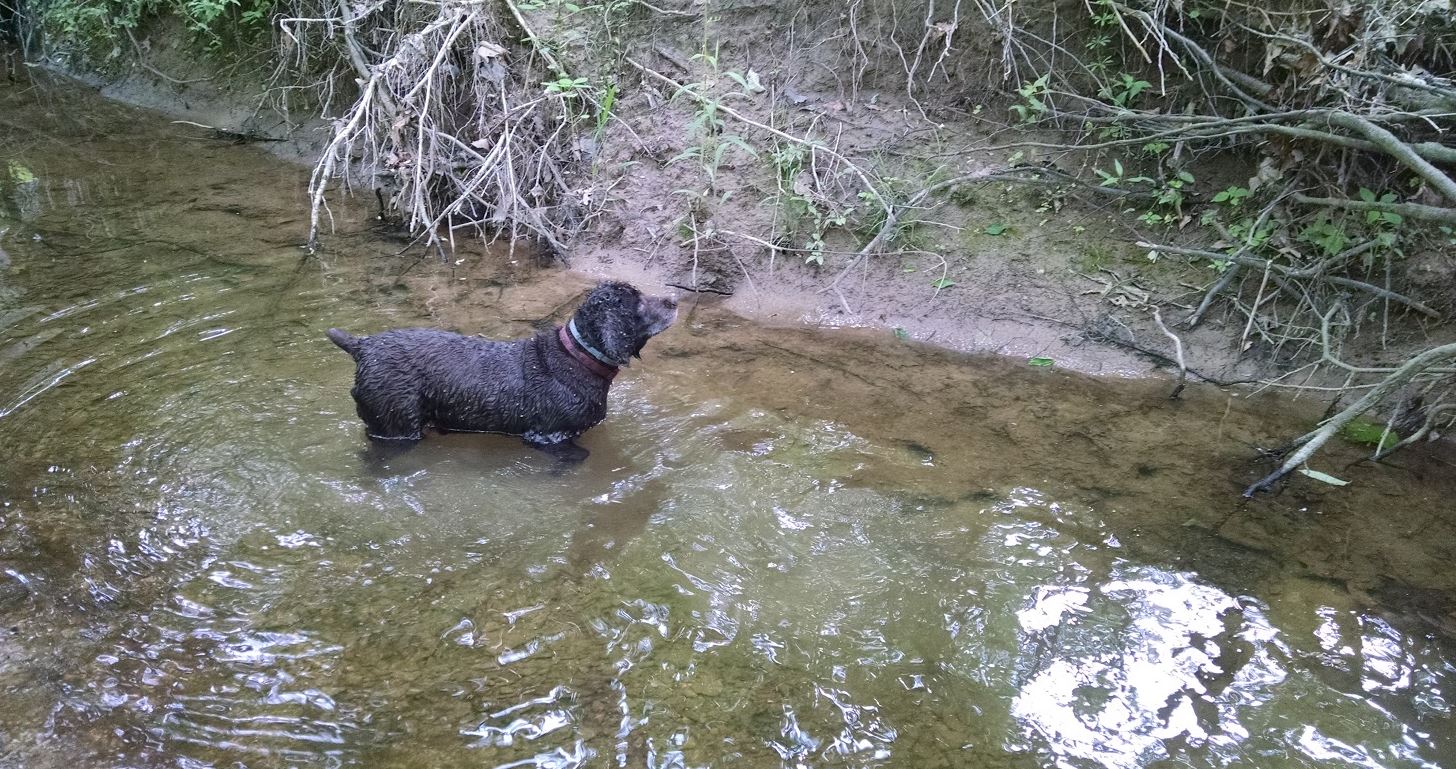
The canines work so diligently that we need to make sure they take time to cool off every so often!
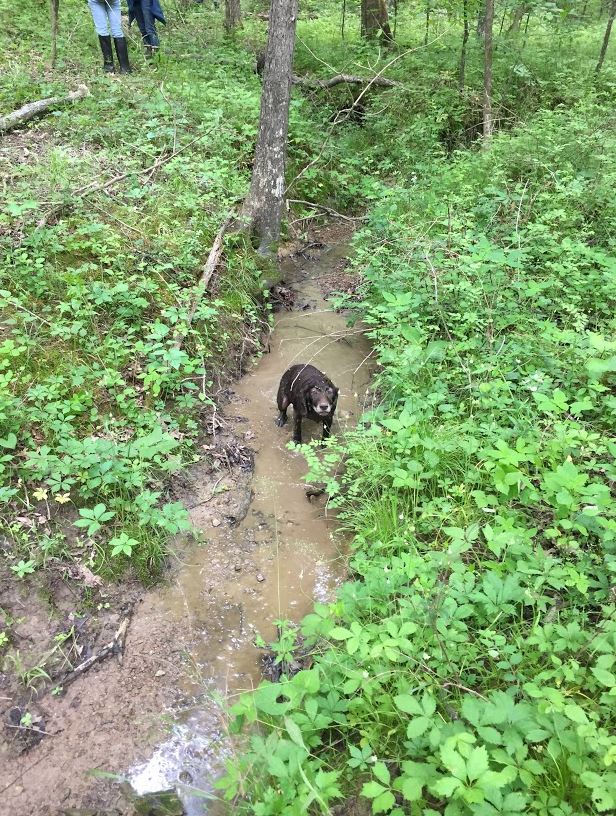
The canines are very motivated to search and travel through different habitat elements.
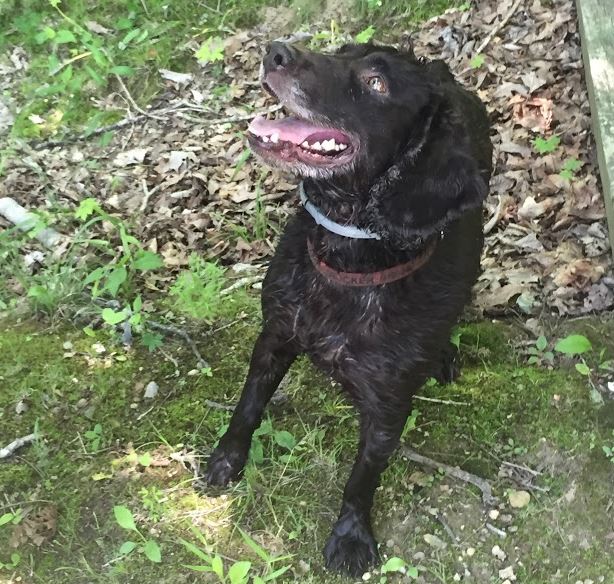
Our Boykin spaniels love their job. 🙂
Here’s a video of the search technique if you are intrigued:
https://www.youtube.com/watch?v=KoomjpGoFW0
The search…
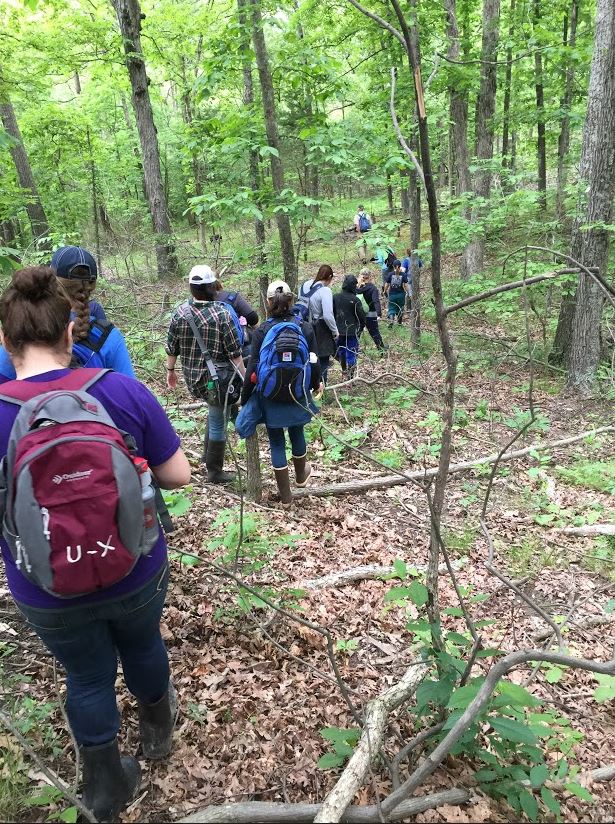
The search team included not only canines, but also 20 veterinary students!
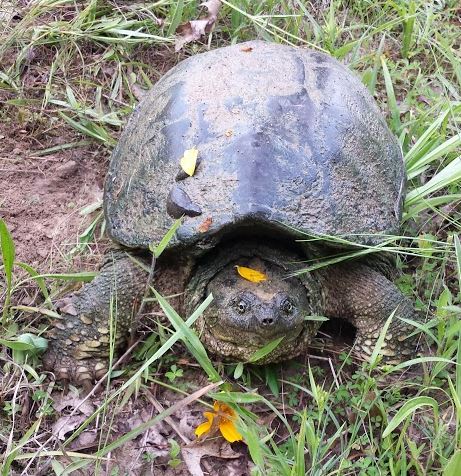
We run into other turtles sometimes, too! Here is a snapping turtle that the dogs spotted from a mile away. She was huge!
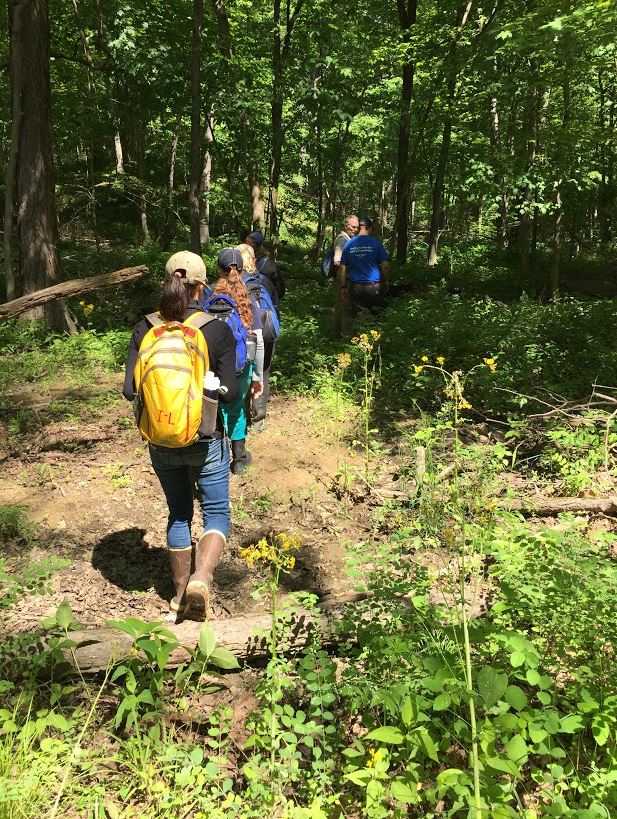
We wear rubber boots to easily disinfect them for biosecurity purposes. We want to have minimal anthropogenic effect on the environment in which we search.
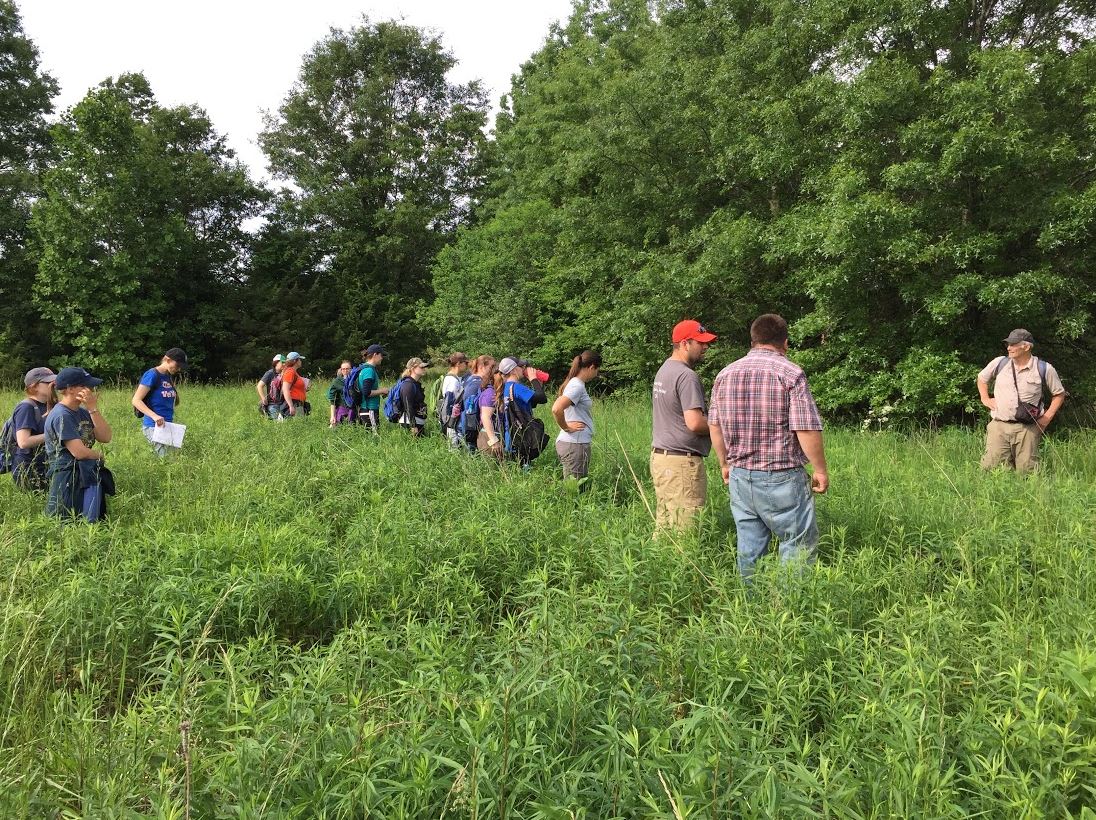
We have to take a moment to redirect our search effort at times. We want to make the most of the time we are searching, so we evaluate the habitat that we may search next.
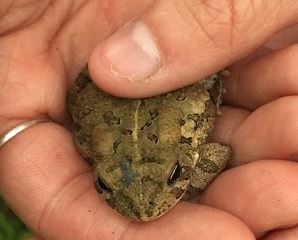
More wildlife that we ran into during our search! It is important to keep in mind the impact that your research has on other species as well.
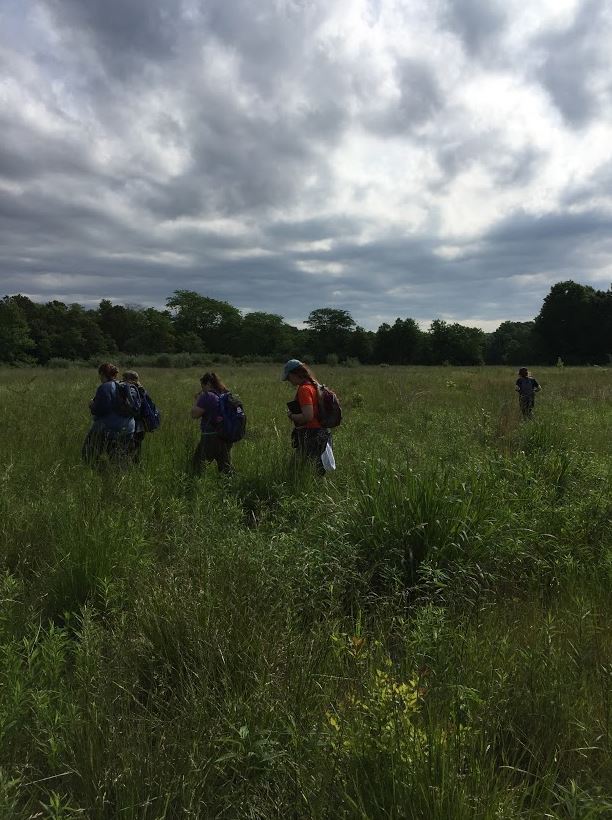
We search during all types of weather and environmental conditions.
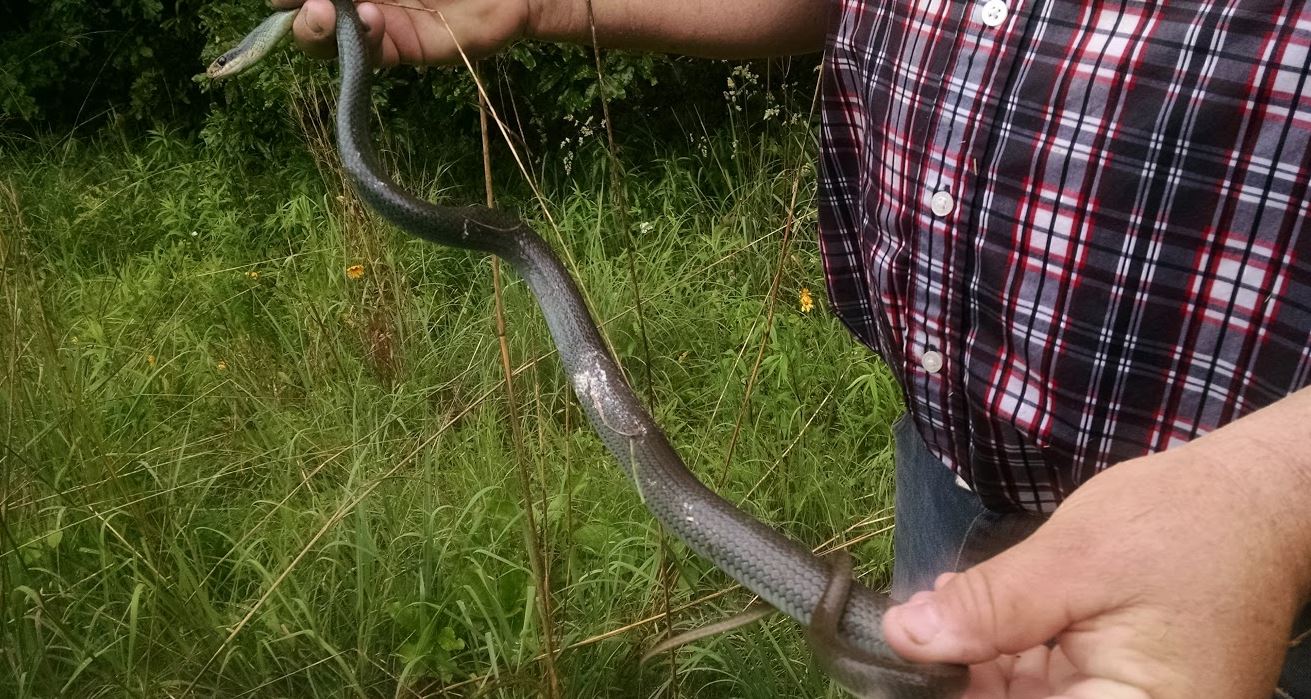
More wildlife that we ran into during our search! It is important to keep in mind the impact that your research has on other species as well.
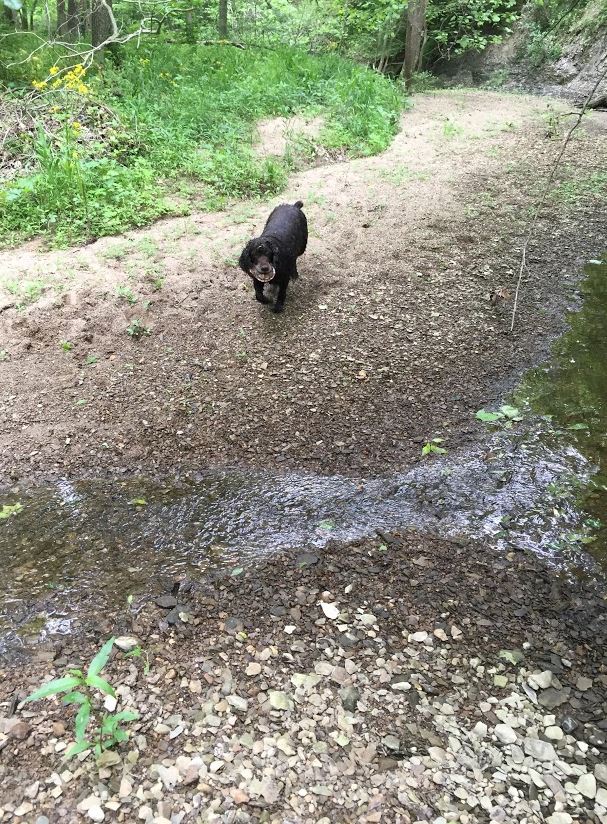
The canine captured an Eastern Box Turtle, so now it is time for Turtle Team to go into action!!
The organized “chaos” of data collection…
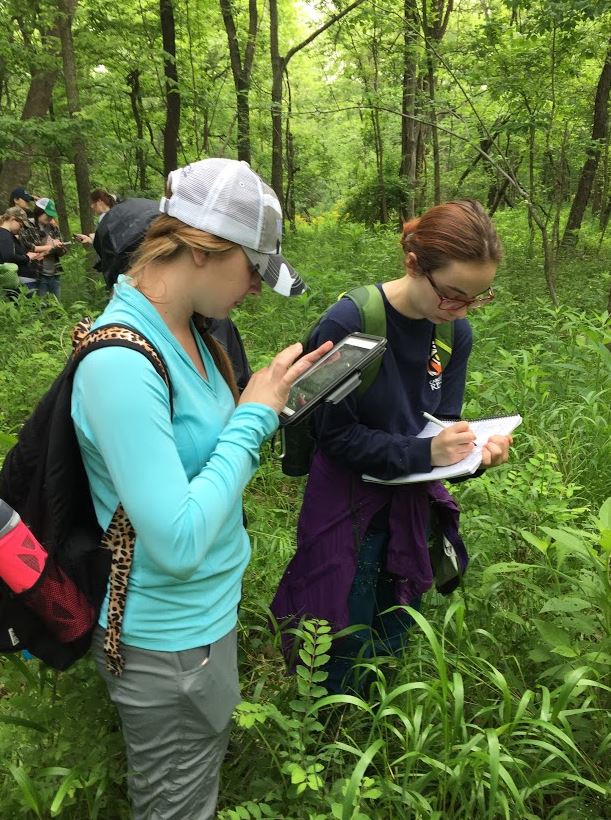
We have two ways to enter data at the time of capture: written in a spiral notebook and via iPad. This helps later down the road when we have to input data into our master computer and check for inconsistencies.
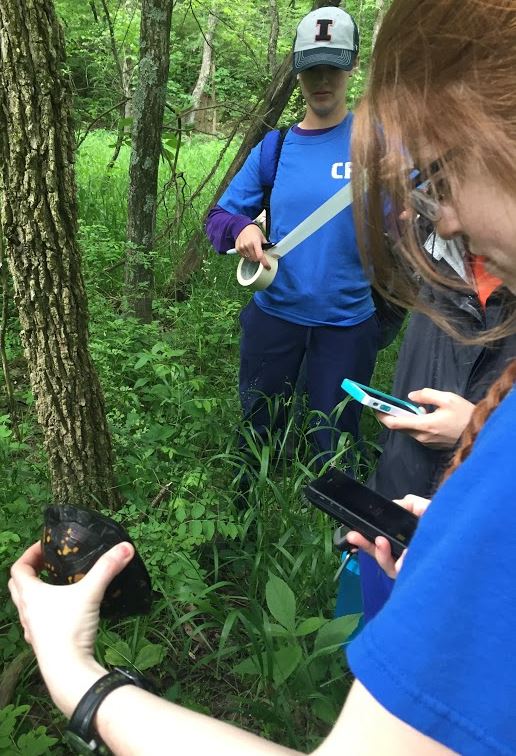
Once a turtle is captured, we determine its body temperature utilizing a thermography camera that can be attached to an iPhone.
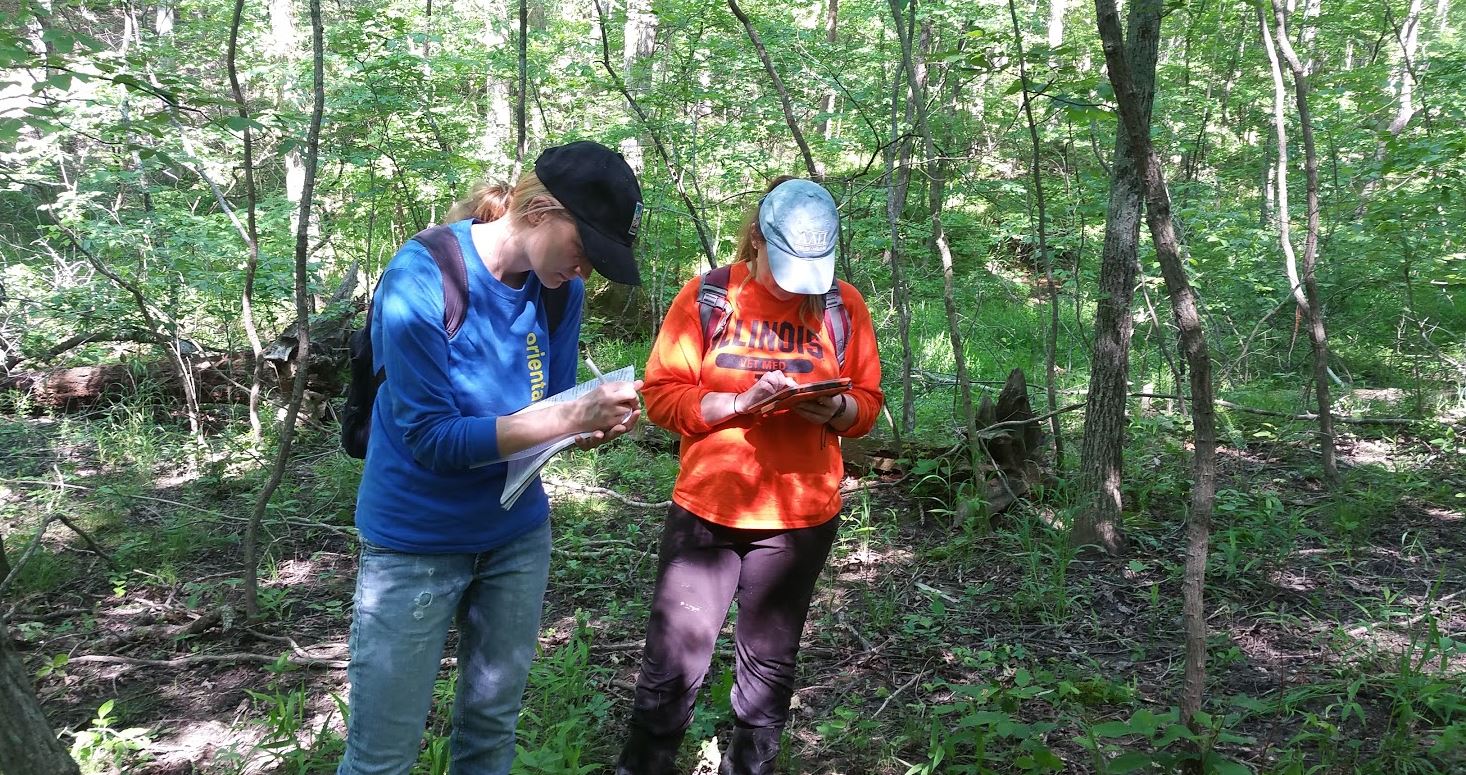
The data that we record includes: turtle identification number, time of capture, and environmental factors.
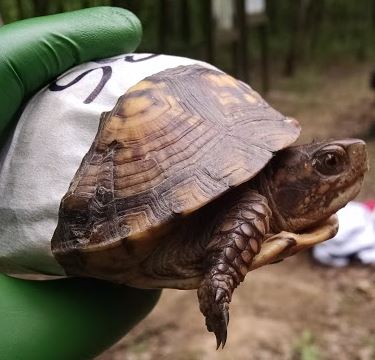
At time of capture we also tape an identification number to each turtle’s shell. This allows us to keep track of each individual turtle as it is passed along to each station at our ‘sampling tent’.
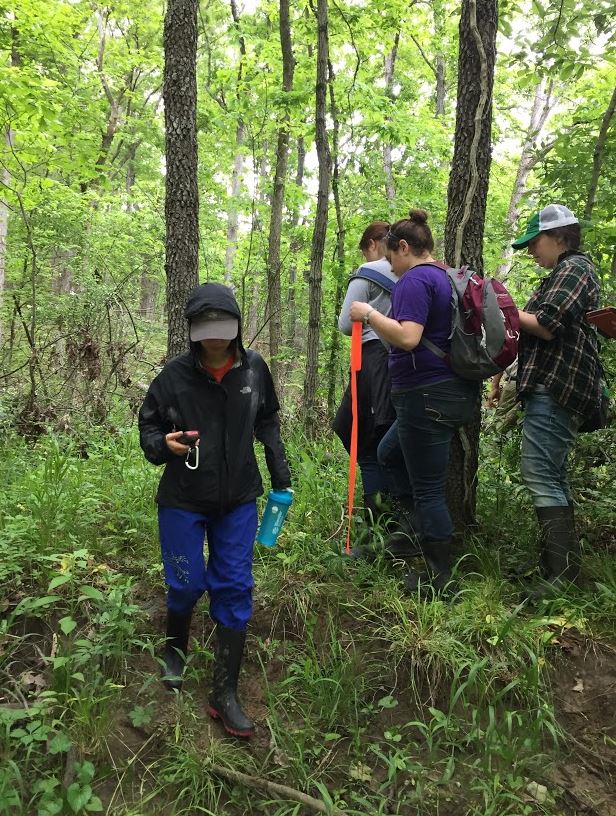
We note the latitude and longitude of each turtle’s capture location. Orange flagging tape is also left at each capture location in order to easily put the turtles back where we found them at the end of the day.
The ‘sampling tent’…
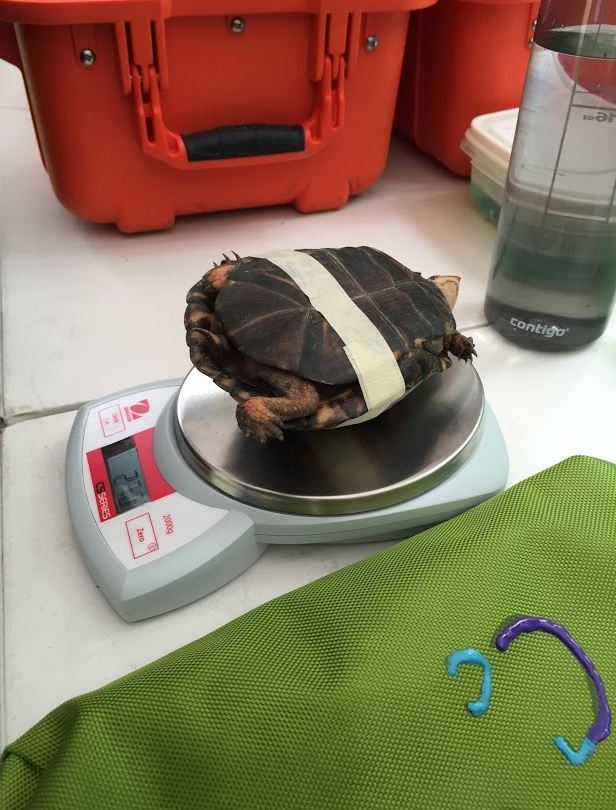
We weigh the turtles and wipe down the scale with dilute novalsan in between each turtle.
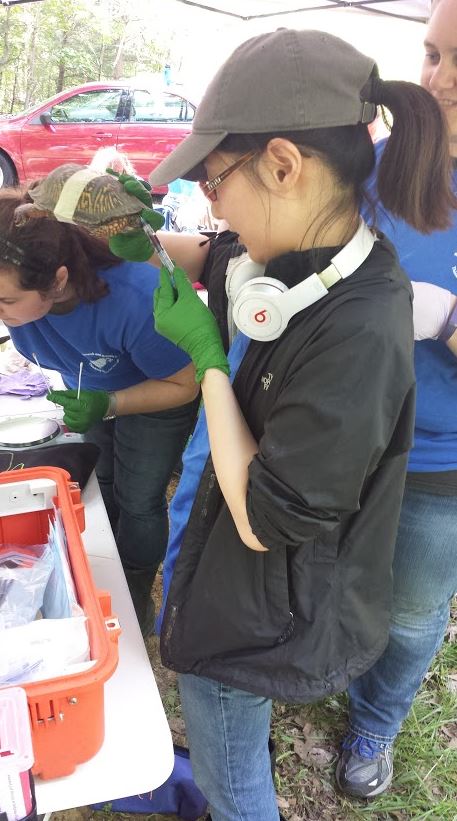
You Na draws blood from the subcarapacial sinus of the turtle.
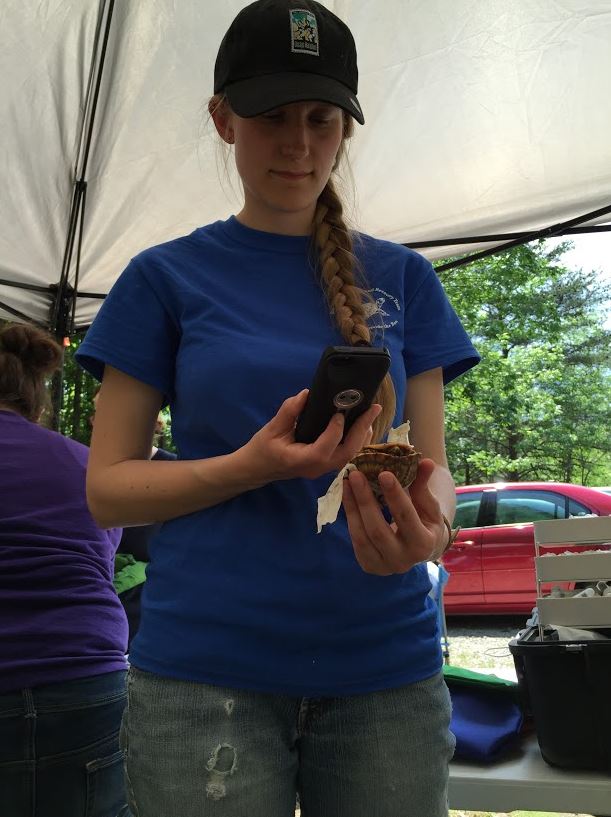
Marni is using a thermography camera at the ‘sampling tent’ in order to determine each turtle’s body temperature.
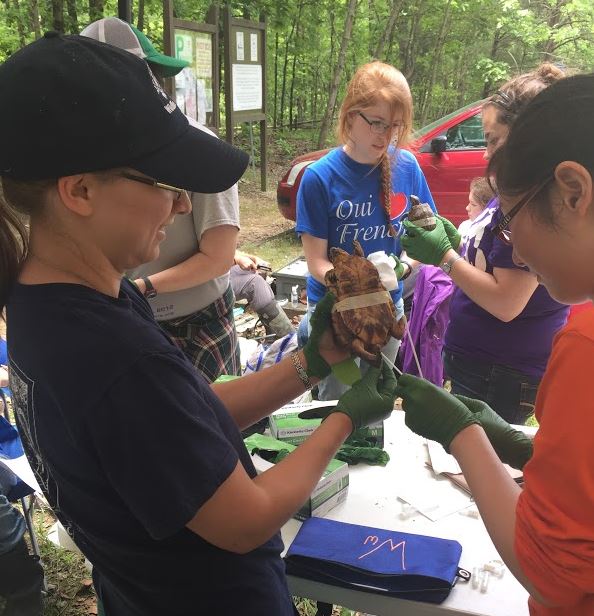
Dr. Laura completes the physical exams and she probably thinks this is “the most beautiful turtle”! She also helps students with the oral and cloacal swab sampling.
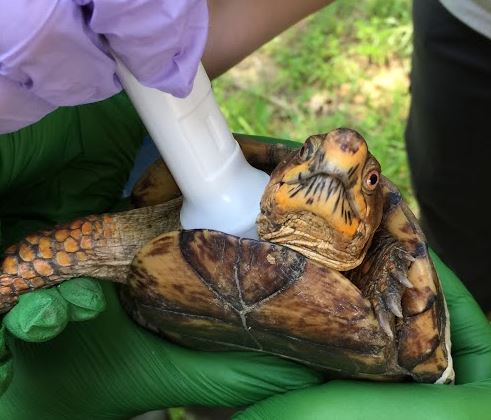
The probe of a doppler is placed between the forelimb and neck of each turtle. By aiming the probe toward the middle of the turtle’s body, we can hear the heart beat. This allows us to calculate a heart rate for each turtle!
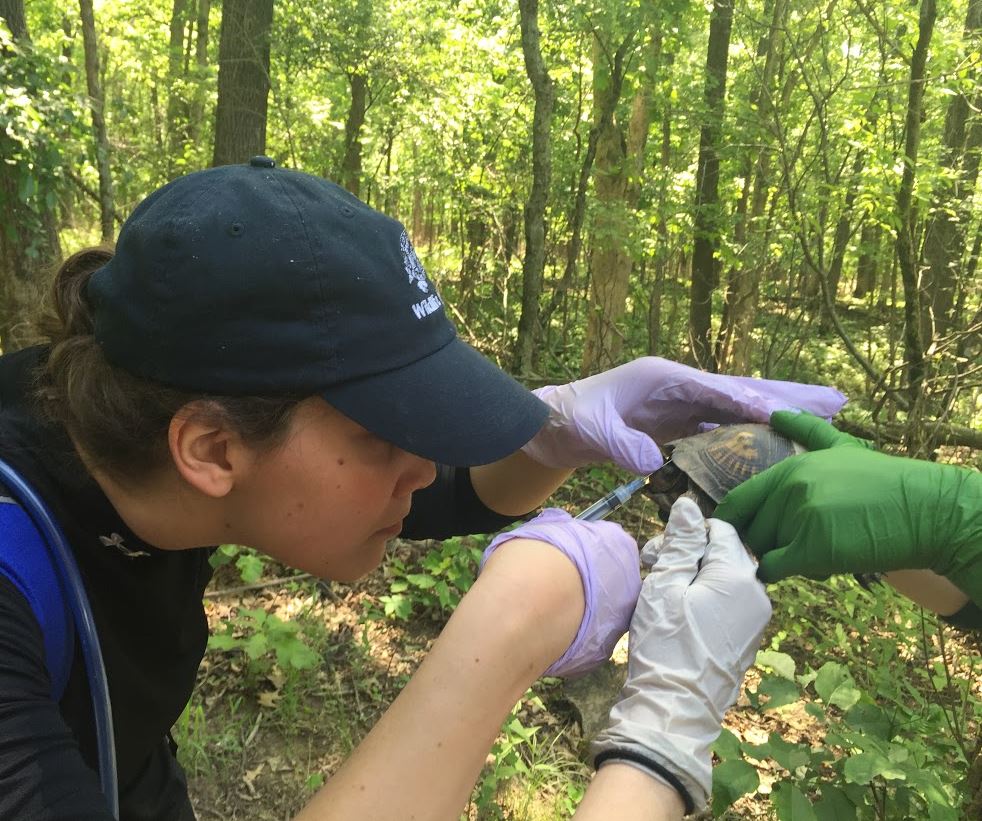
I am drawing blood from a turtle that is not agreeing with Turtle Team. It is amazing how helpful all of the Turtle Team members are when an extra hand is needed!
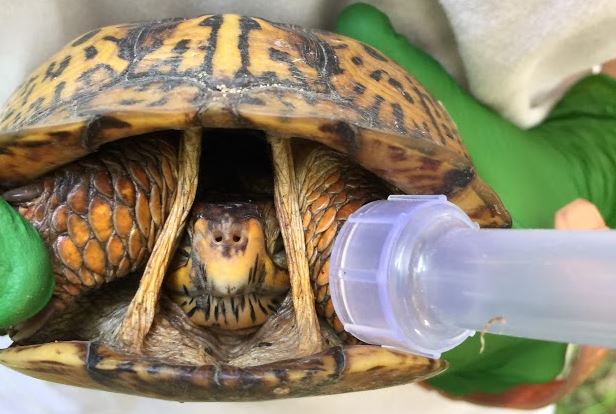
In order to access the turtle’s subcarapacial sinus for venipuncture, we sometimes have to wedge a syringe case in between the turtle’s carapace and plastron.
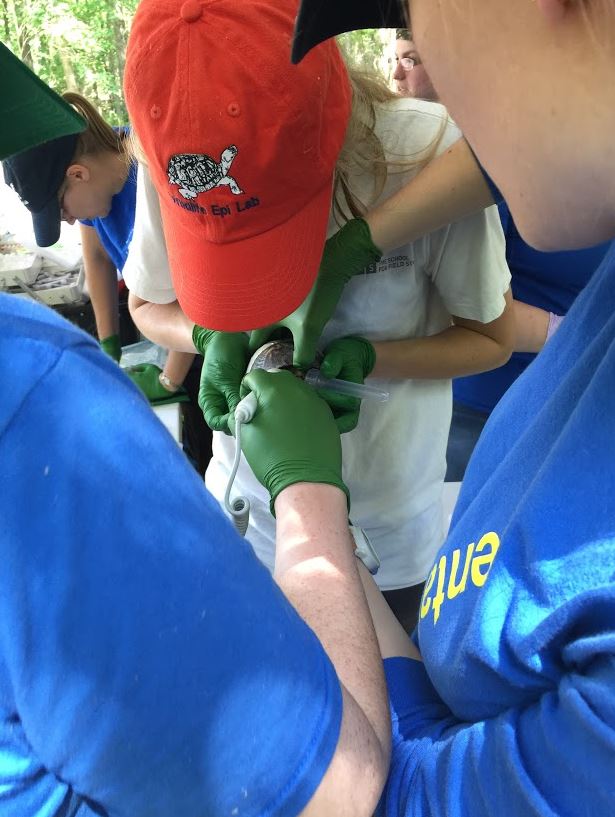
It takes a group effort to position a turtle for the doppler when the turtle is a wee stubborn!
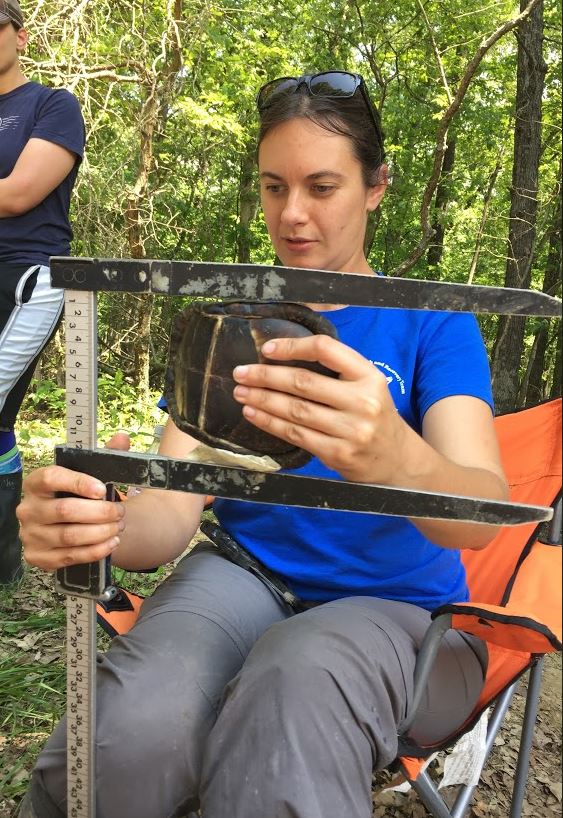
Sarah, a collaborator from Illinois Natural History Survey, helps us with demographic measurements of each turtle. The measurement that she is taking in this photograph is the ‘carapace width’.
The labwork…
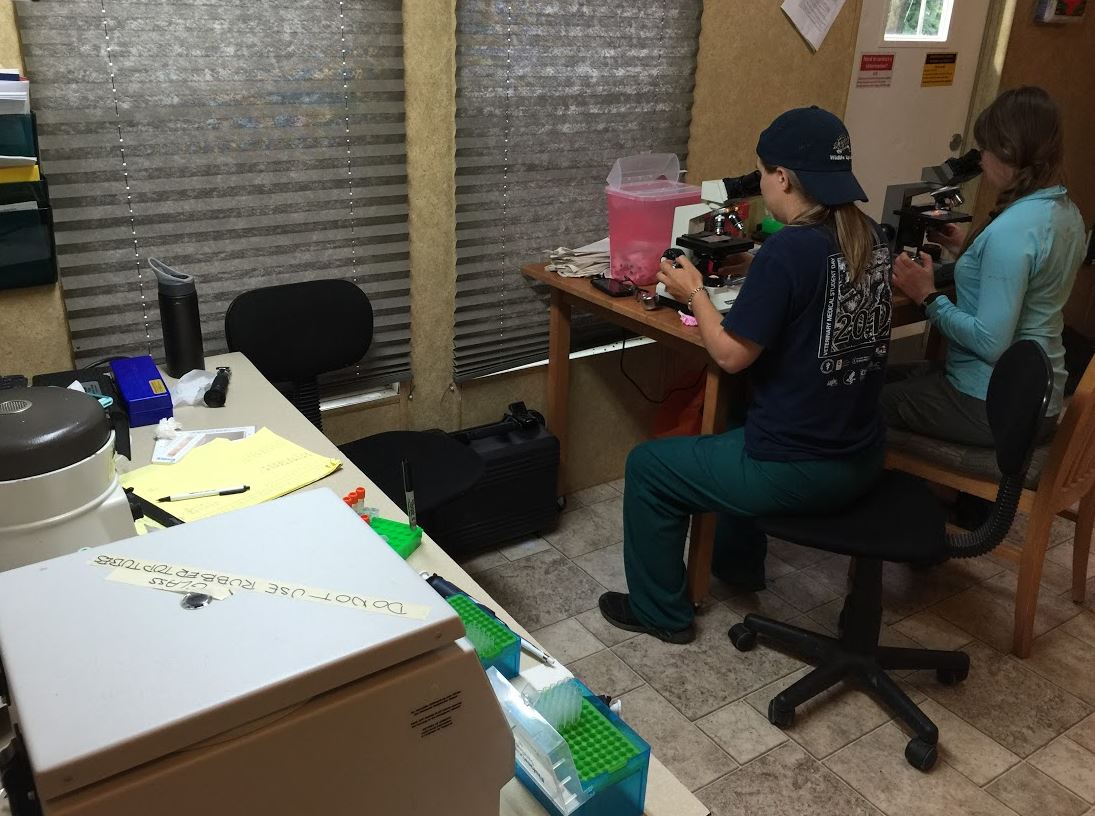
After returning turtles to their exact locations, we must switch gears and process all of the blood samples.
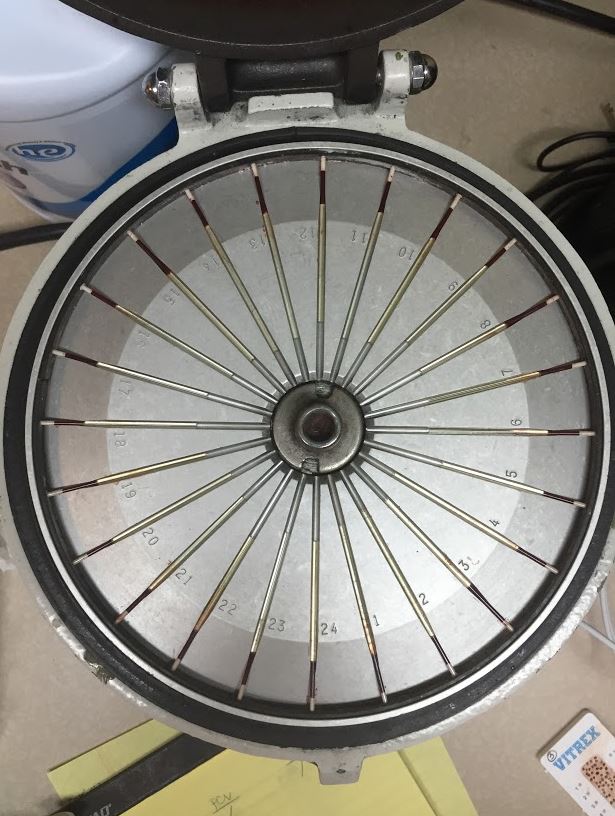
We put a small amount of blood into these thin hematocrit tubes and then centrifuge them. This separates the blood into 3 layers. We can measure the packed cell volume and total solids. This data helps us further understand the health status of each turtle.
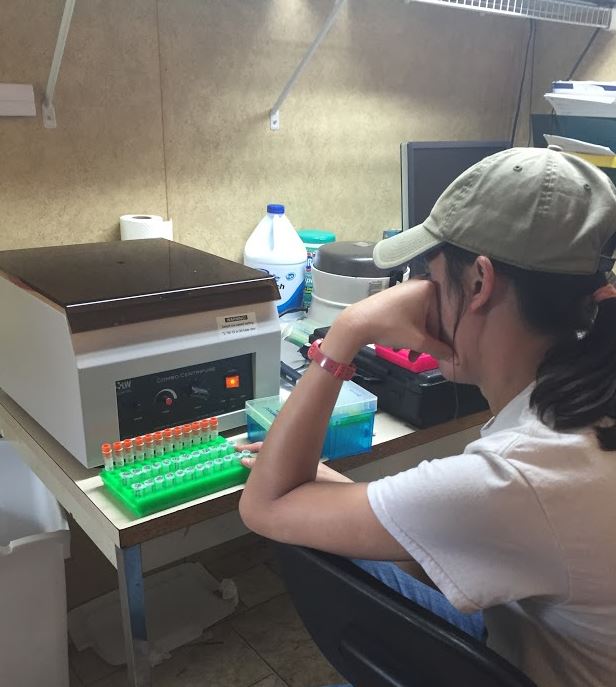
Michelle is waiting patiently for the plasma to separate away from all other aspects of the blood. The plasma is stored and used for other diagnostic purposes, like plasma biochemical analysis and plasma protein electrophoresis.
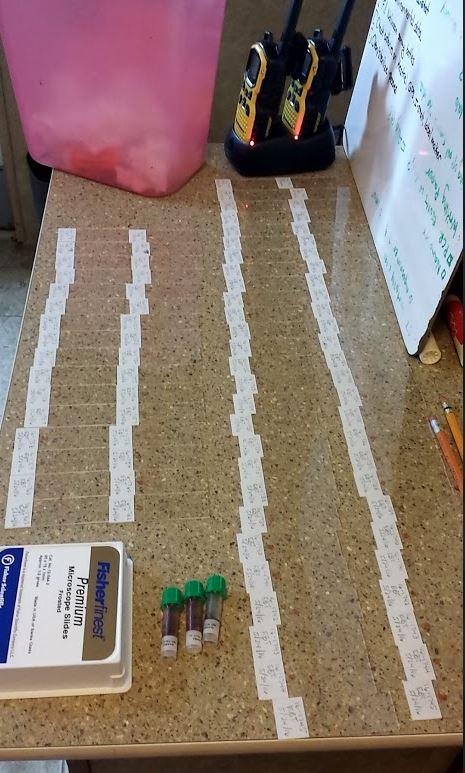
By creating multiple blood smears for each turtle, we are able to stain the slide and then count the types of cells that are in the blood. This method helps determine the health status of each turtle. During this trip I completed over 150 blood smears!
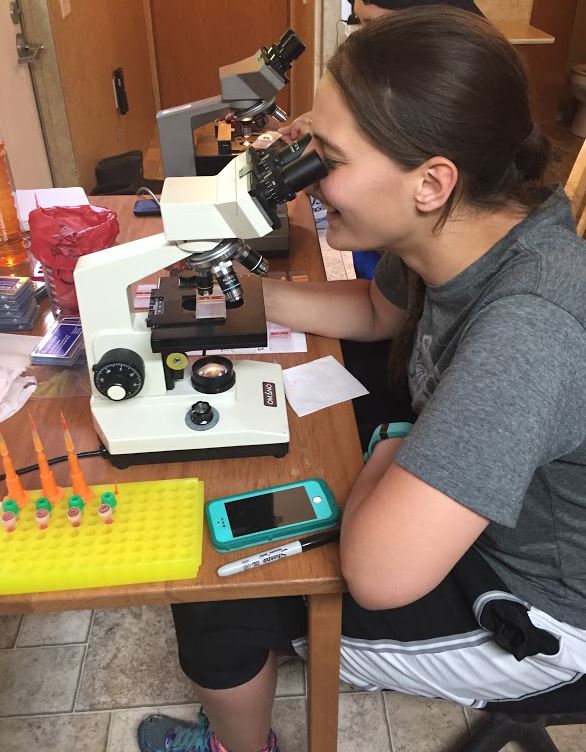
The hemocytometer takes the longest amount of time. After staining the blood cells and letting them settle onto the special slides, we are able to count the number of heterophils and eosinophils in each blood sample. Ashley is making this look fun!
The end…
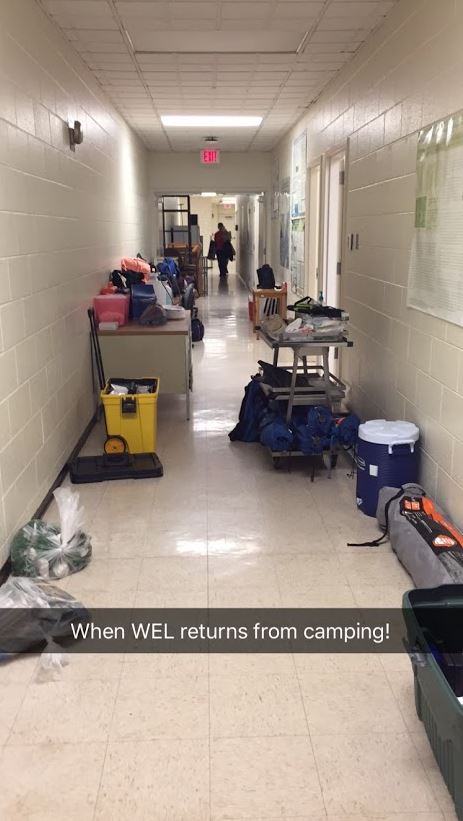
Guess who gets to put all of the camping items away? 0:)
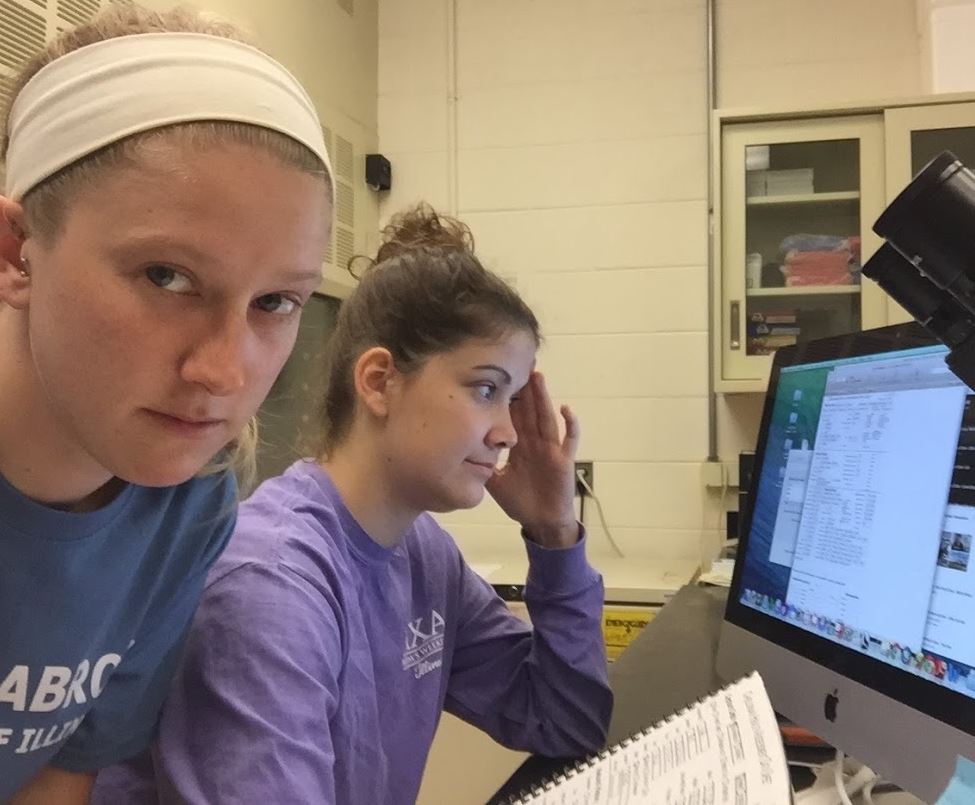
I get by with a little help from friends!! Entering all of the data into the master database takes a long time. Especially when we have to worry about validity and consistency of the data that is inputted. This spanned over the course of multiple days because there were 82 live turtles and 3 shells from the entire trip at Forbes!
We have the most fun time… 🙂
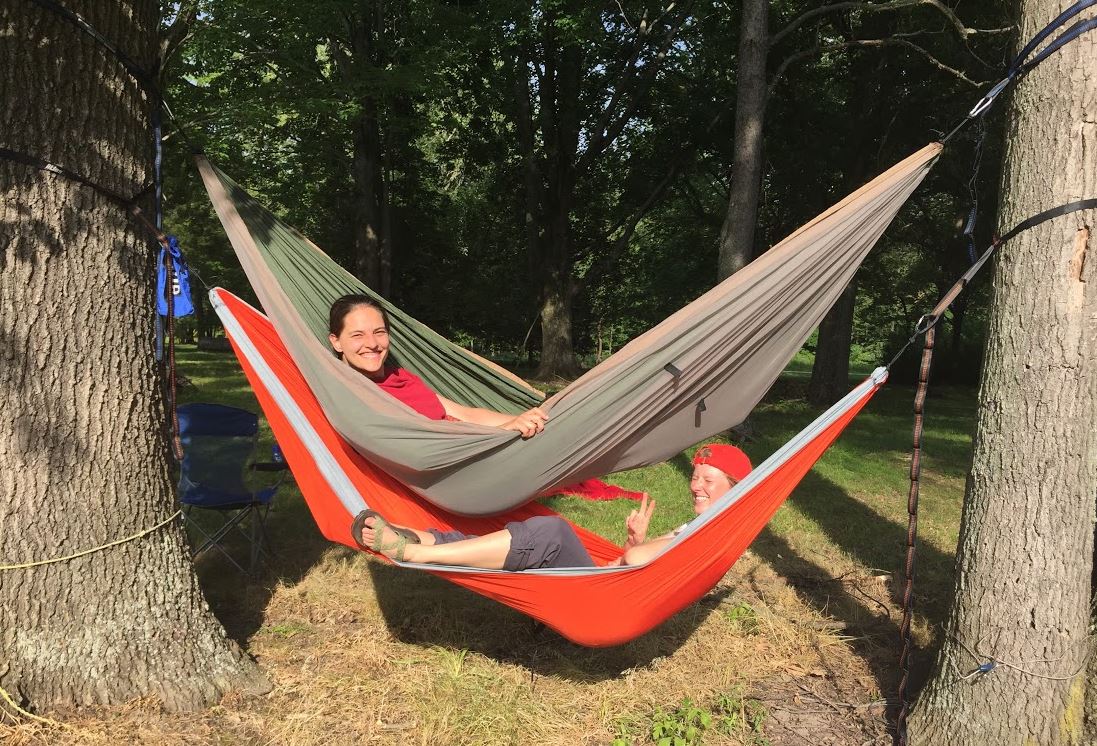
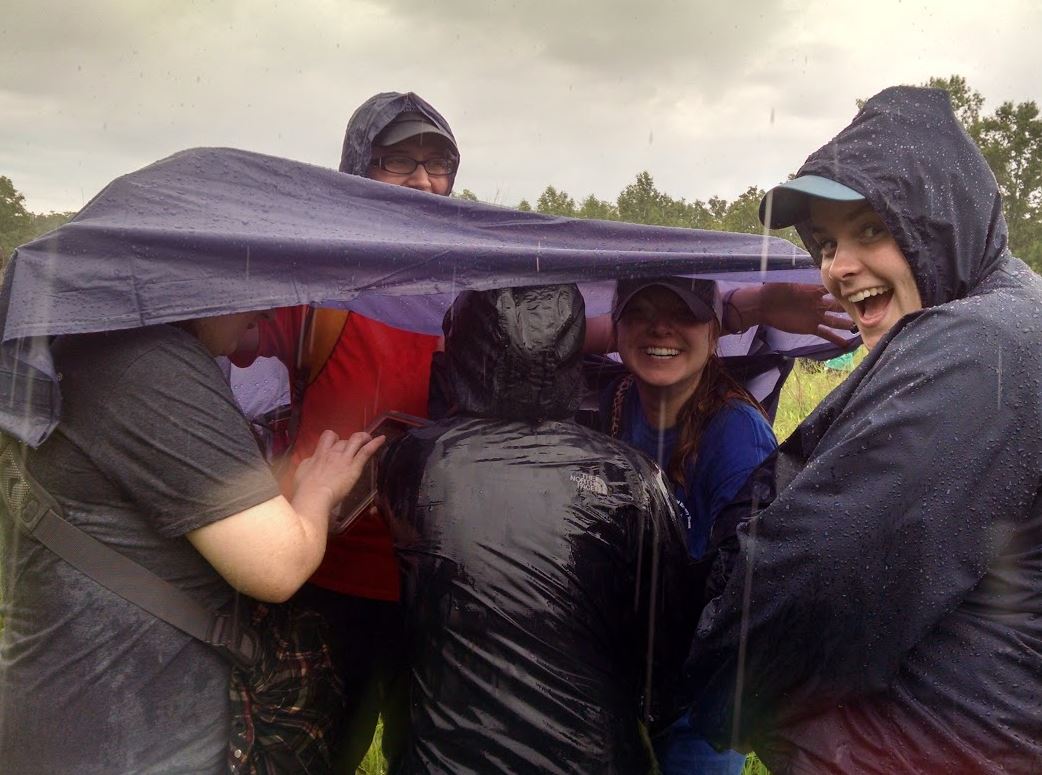
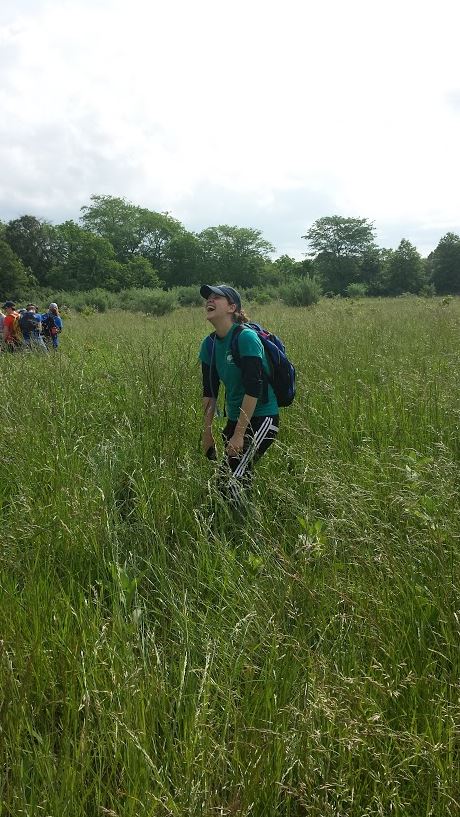
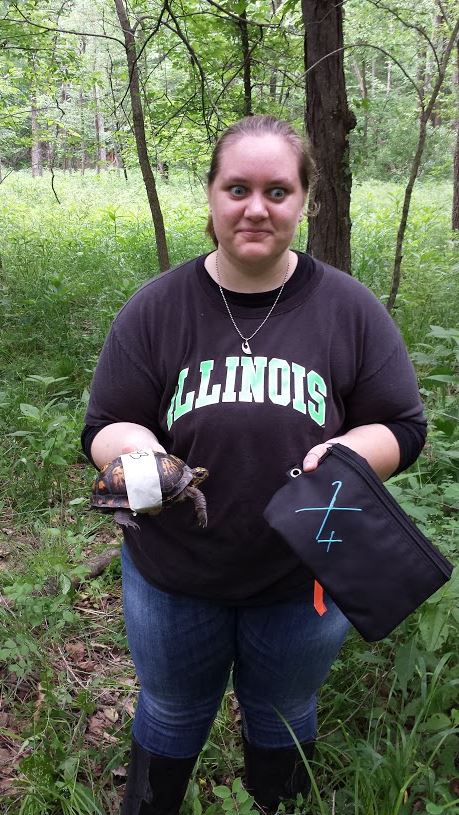
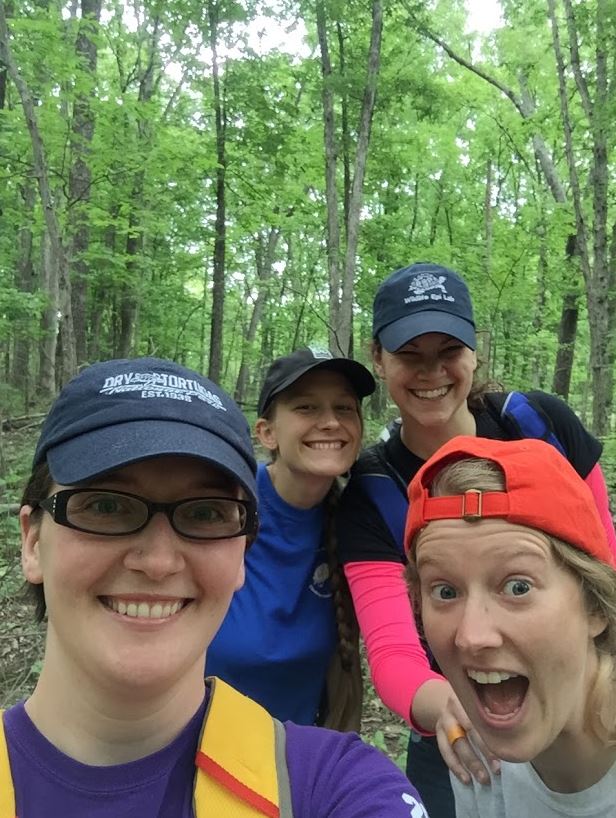
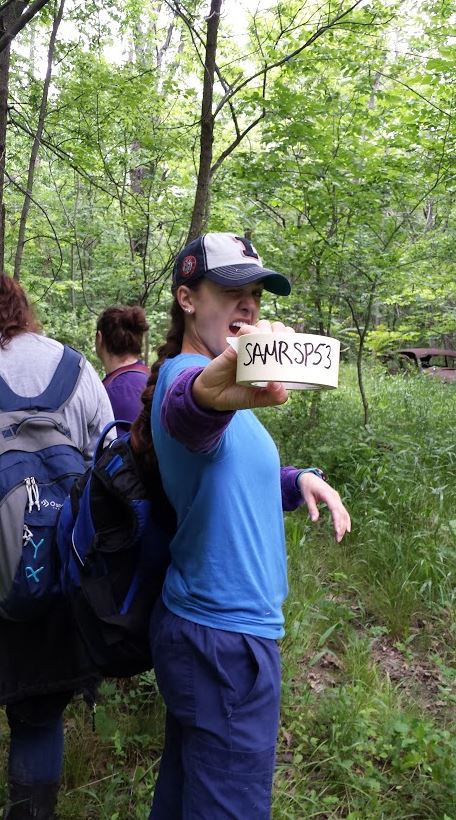
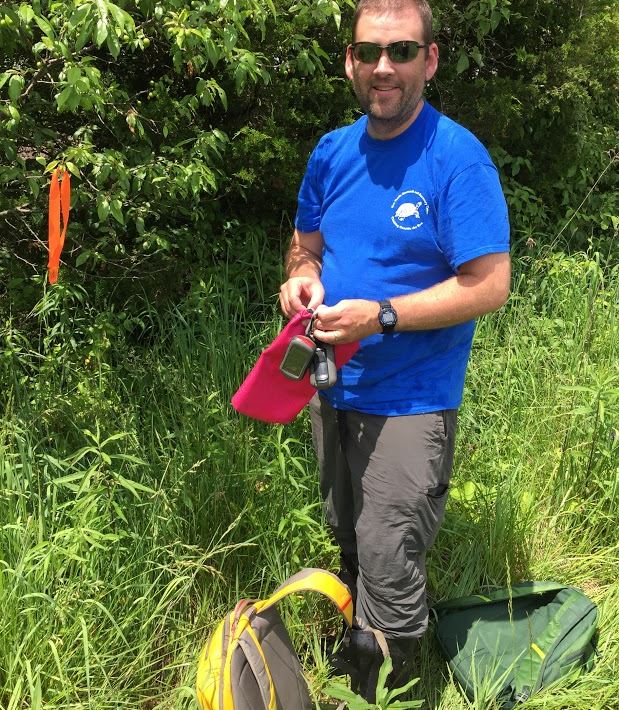
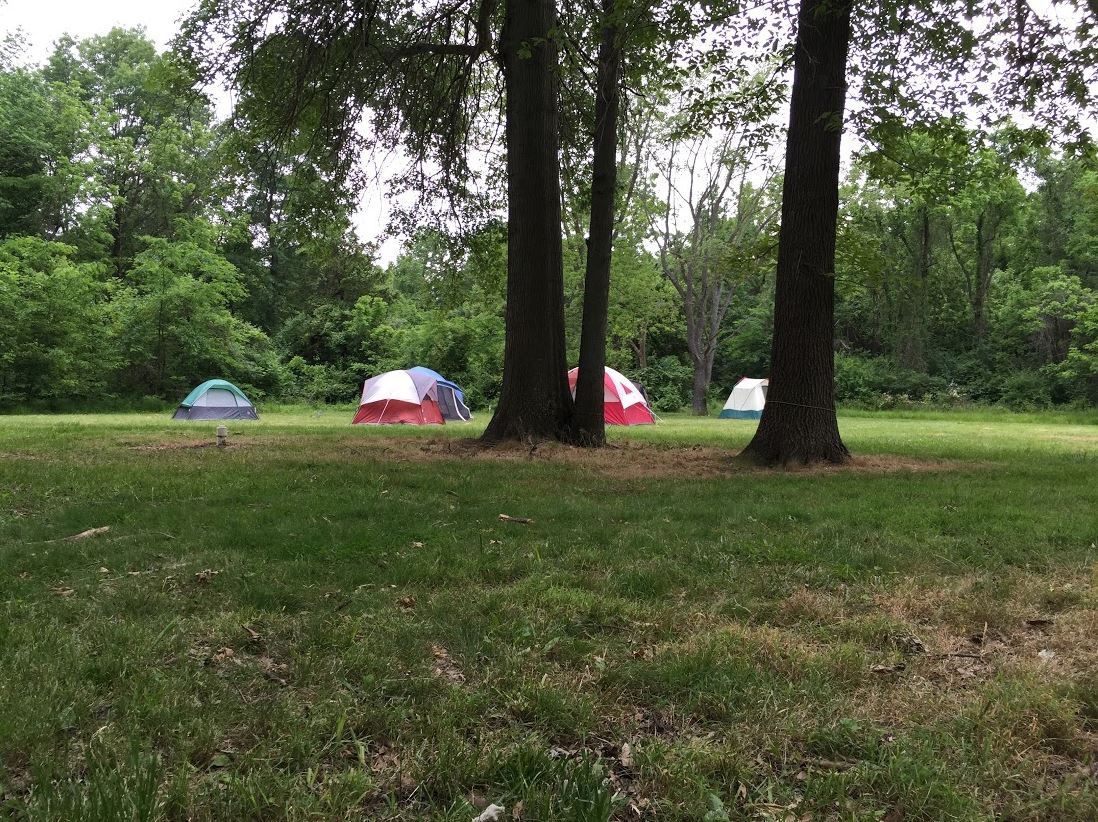
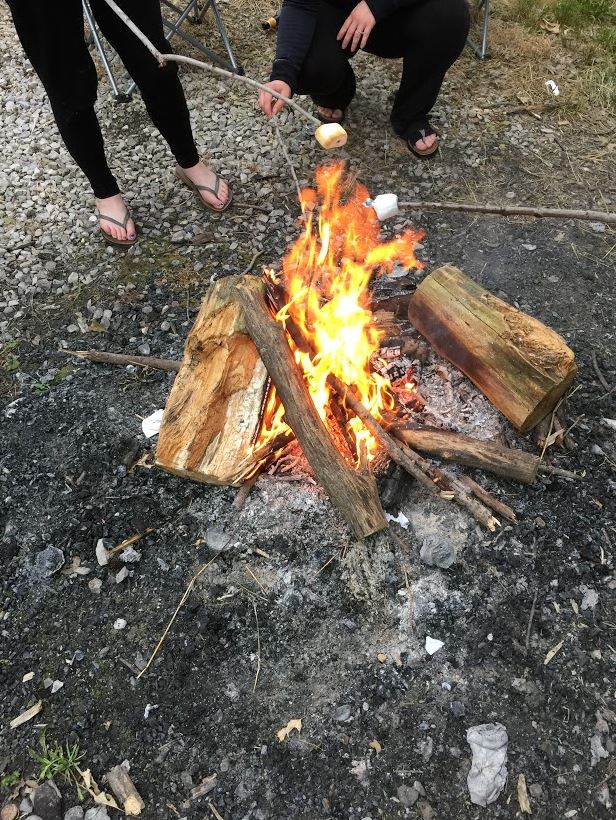
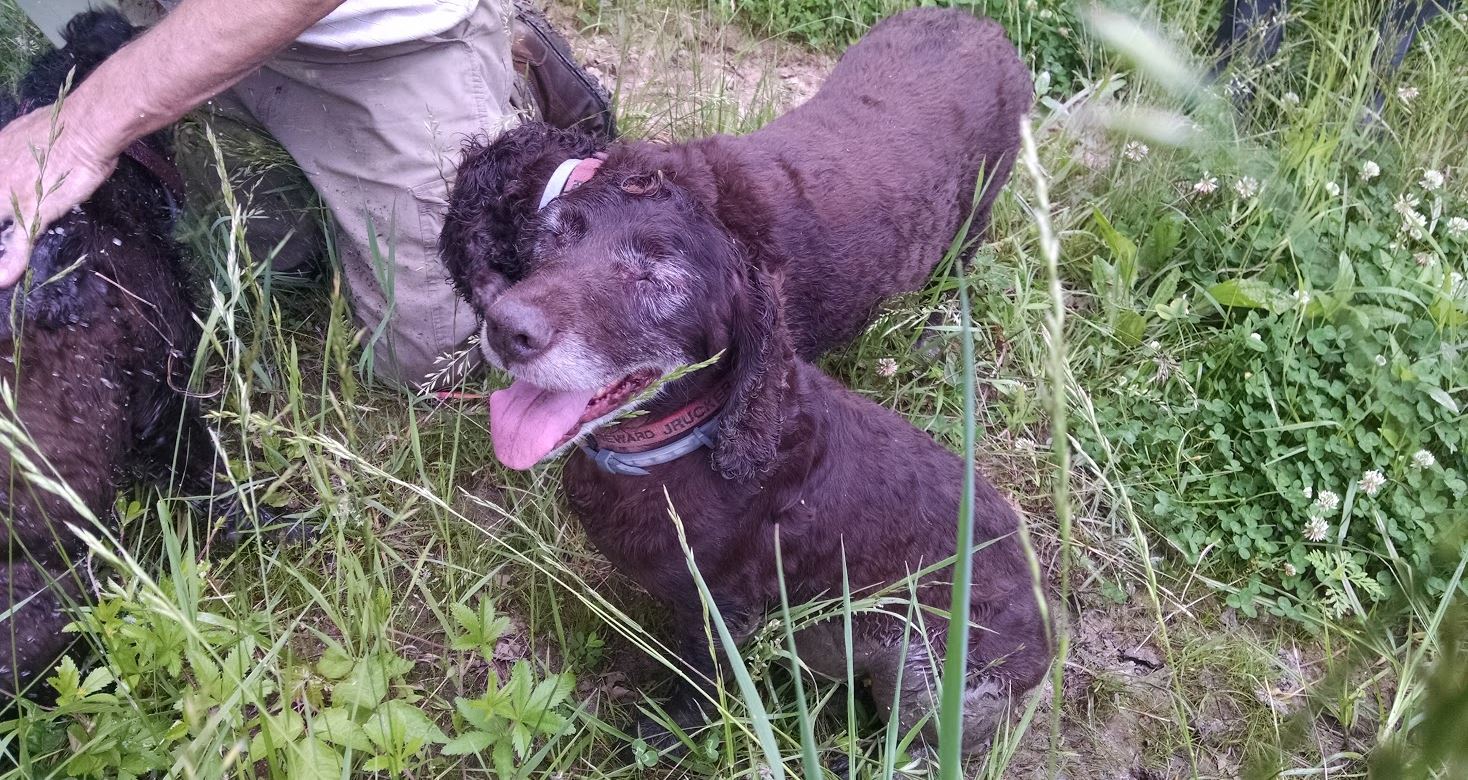
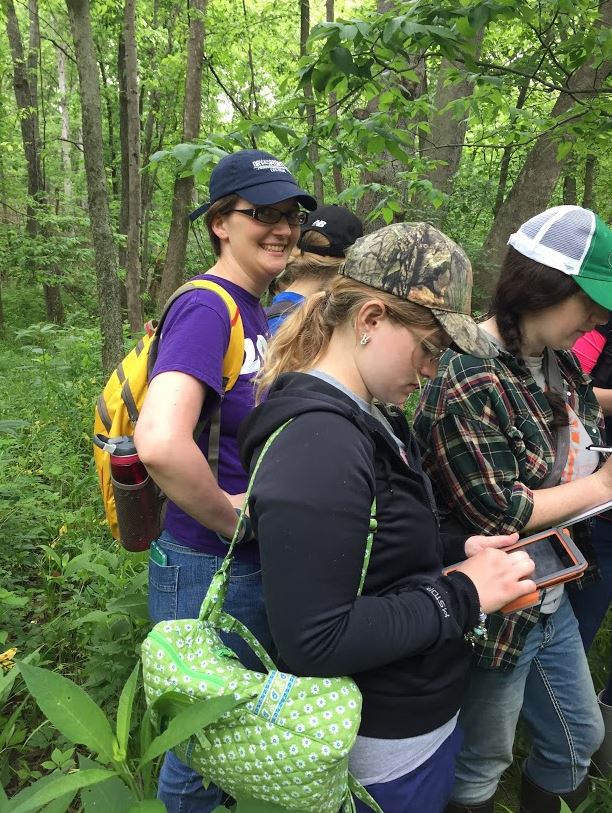
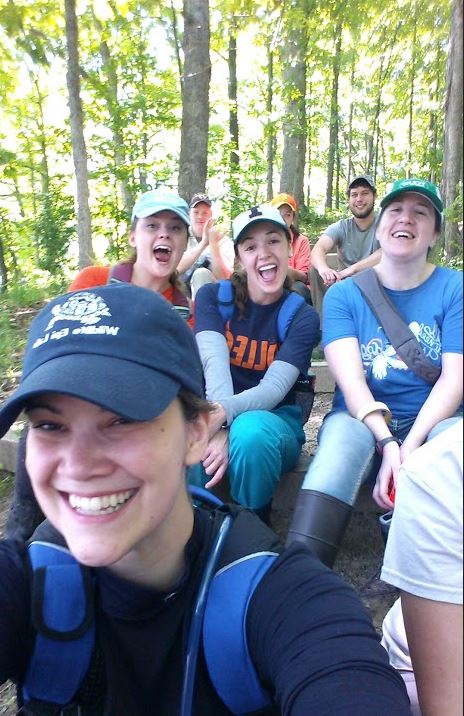
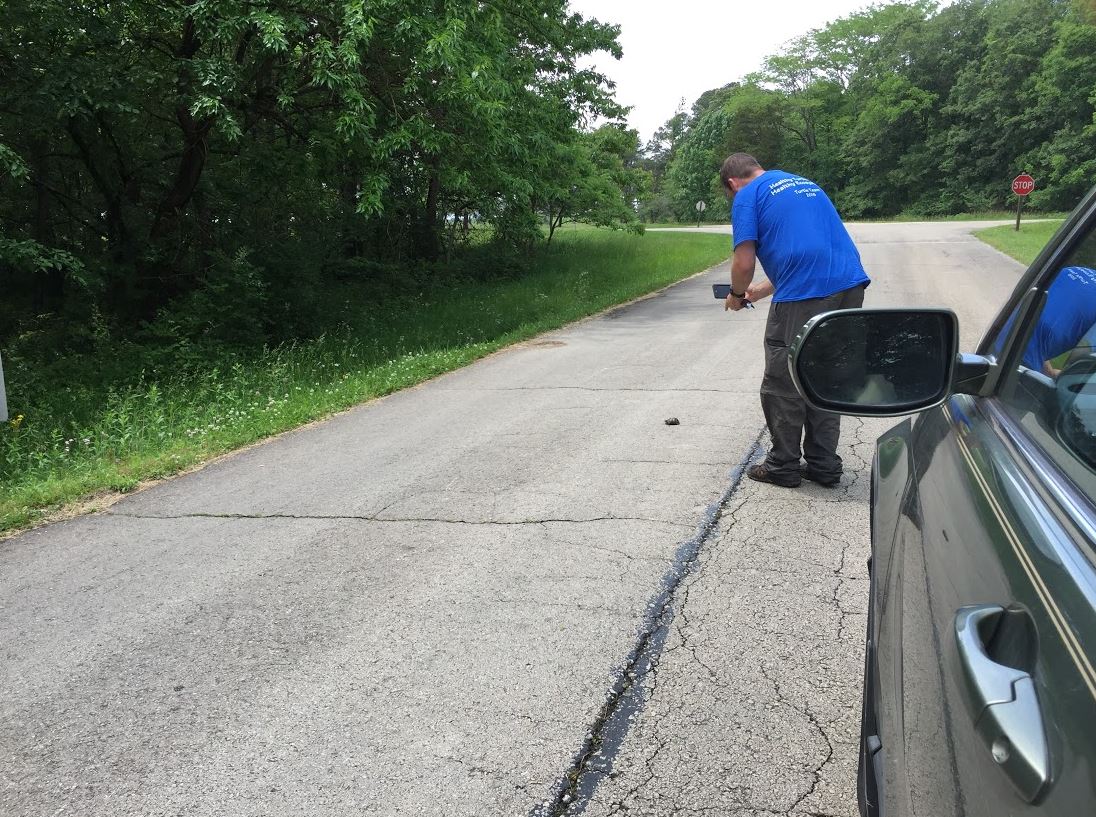
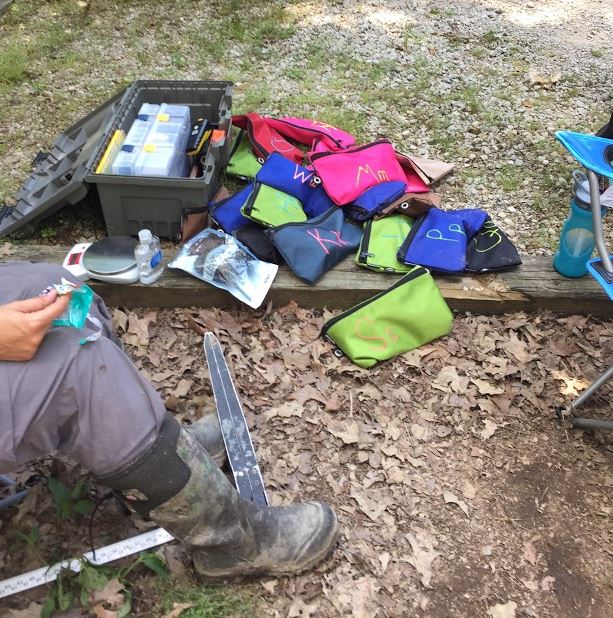
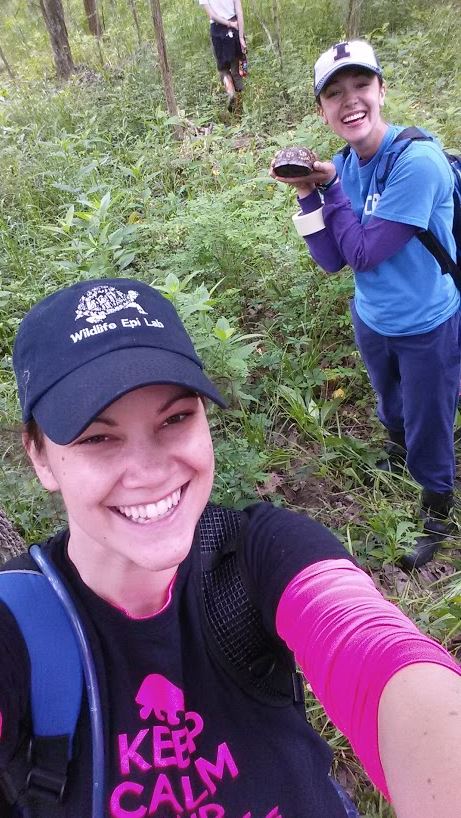
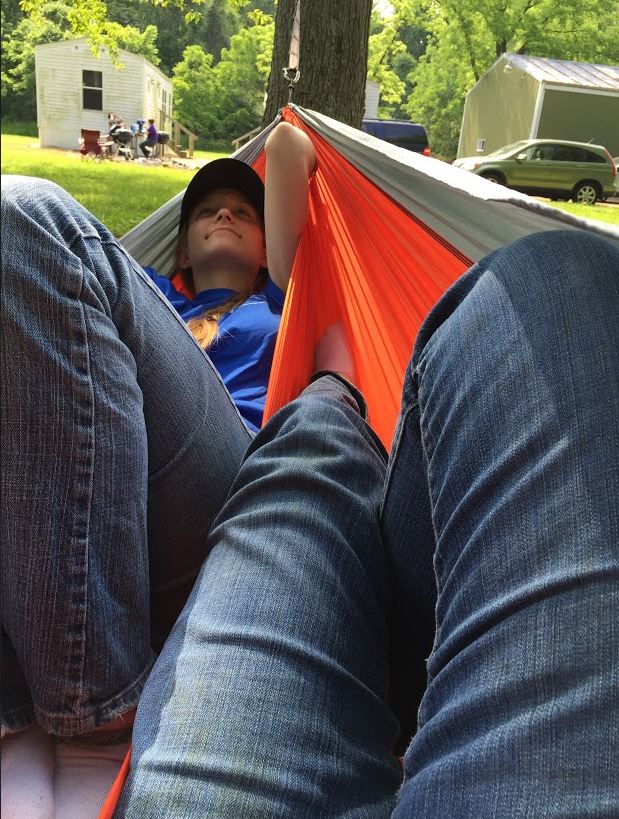
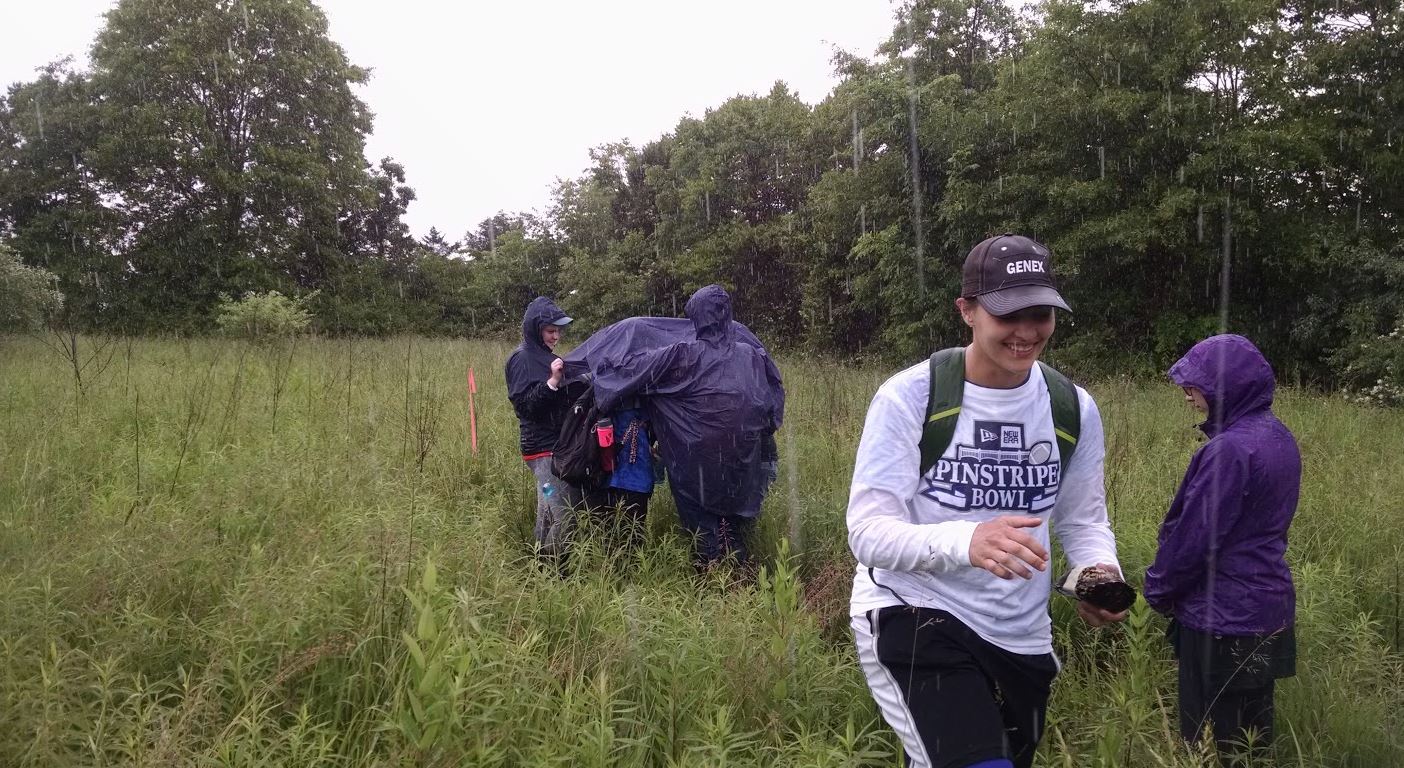
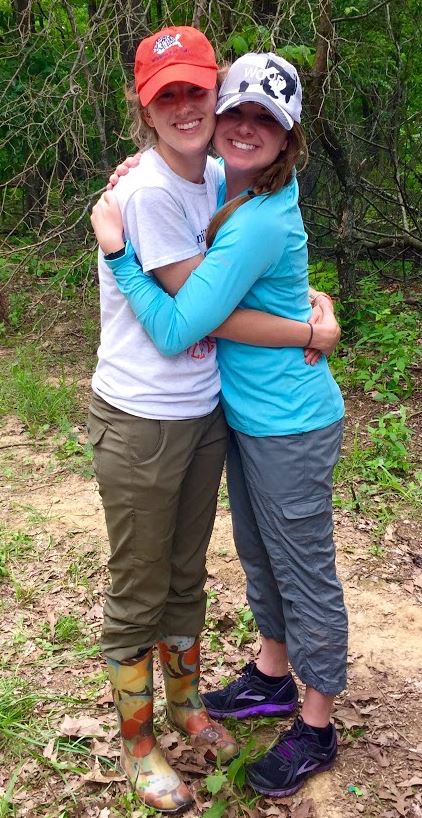
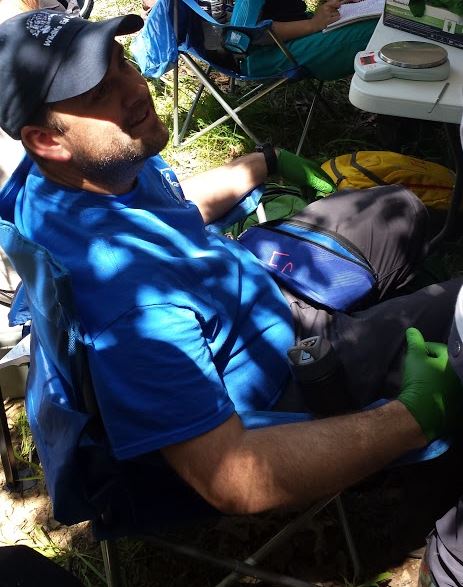
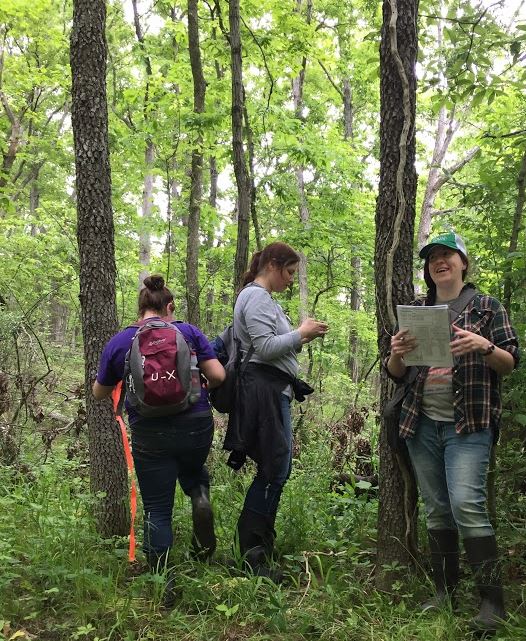
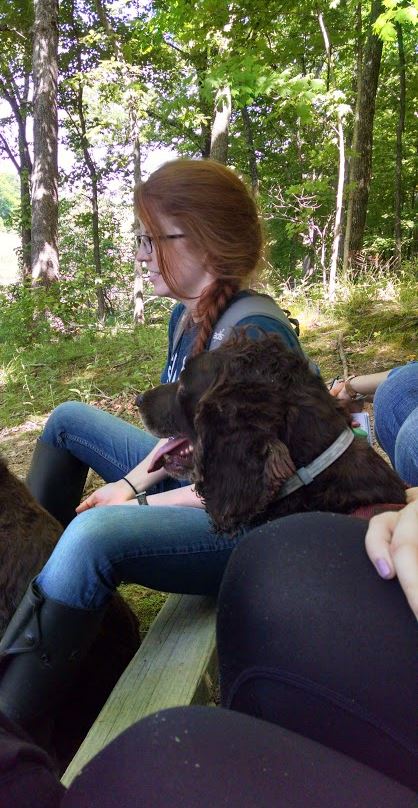
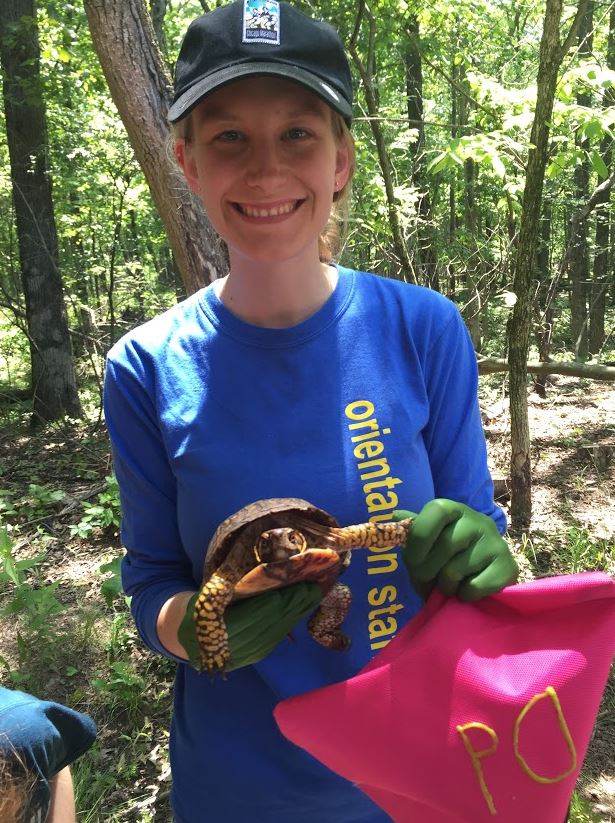
Baby eastern box turtle photoshoot… <3
